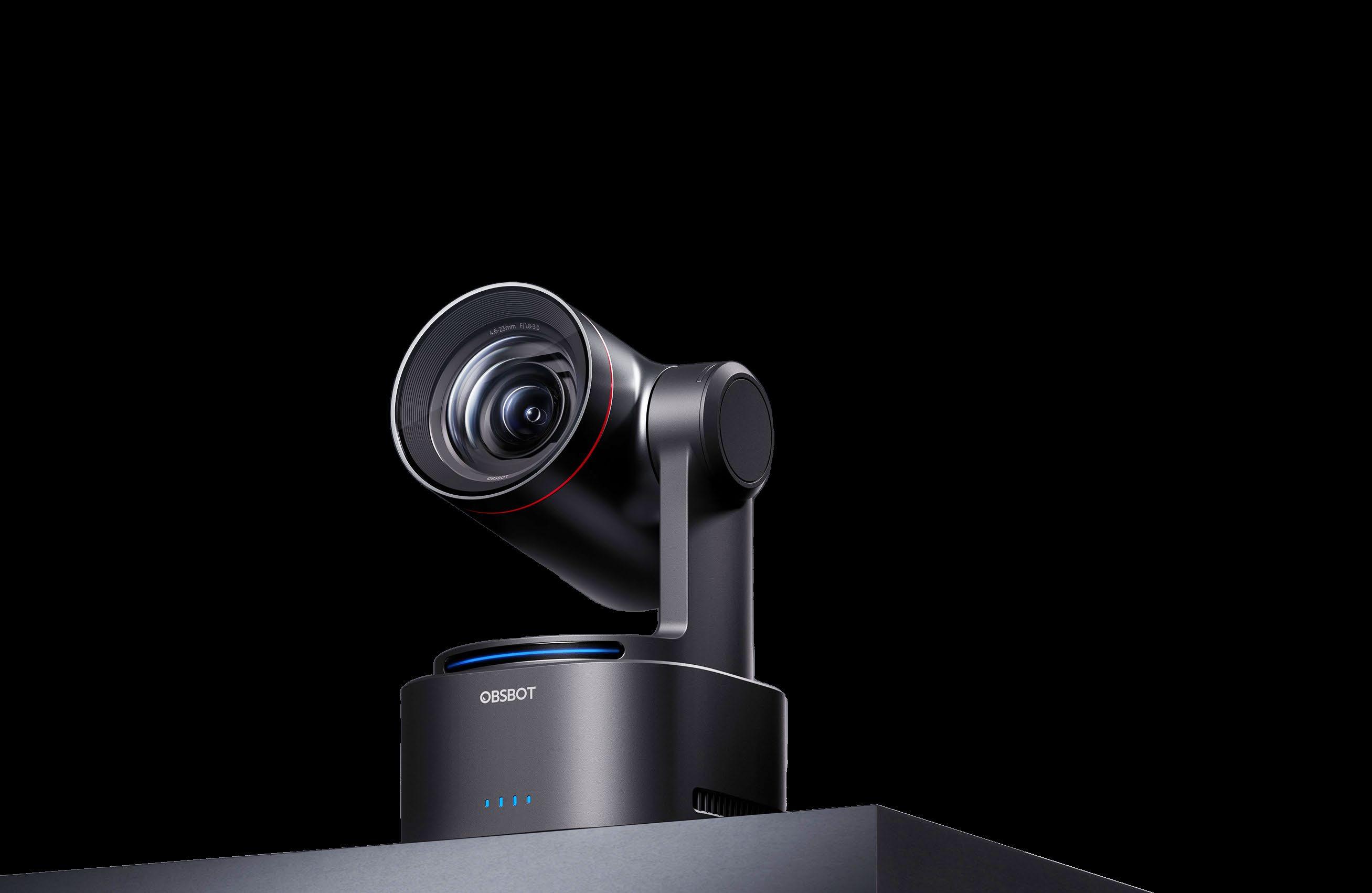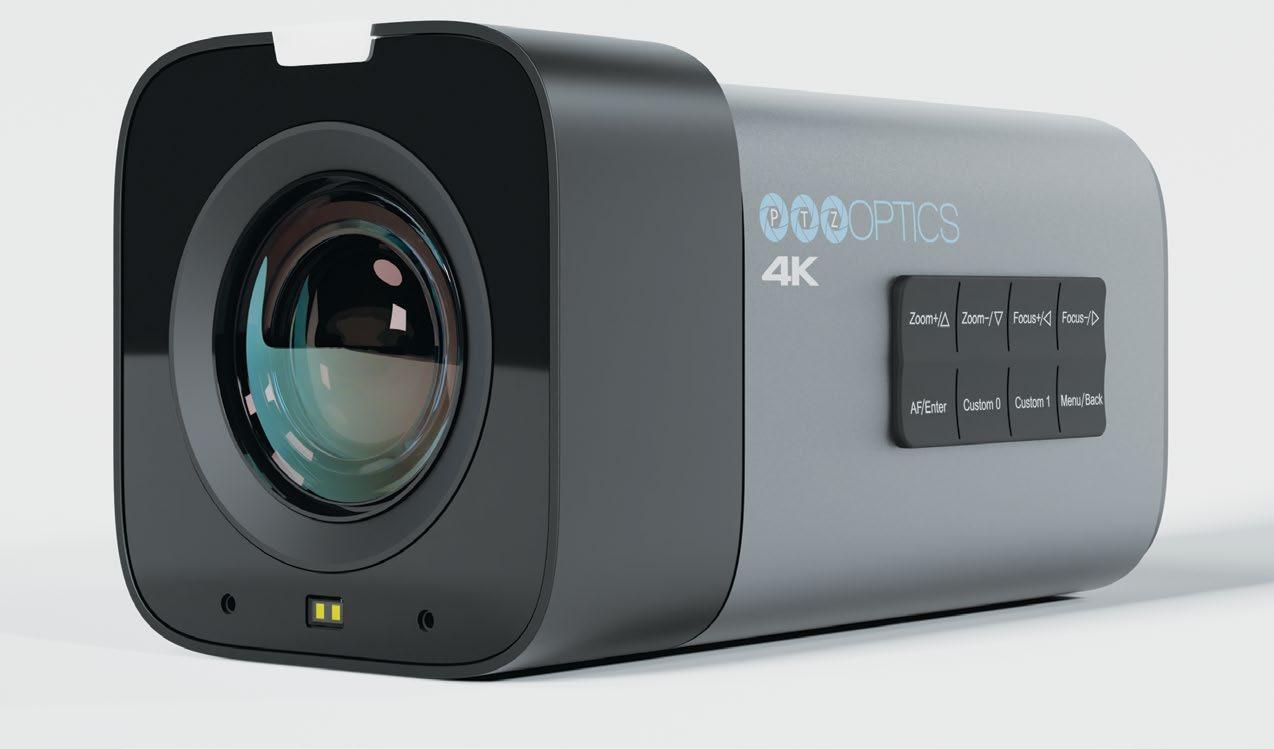




Broadcasters Adopt
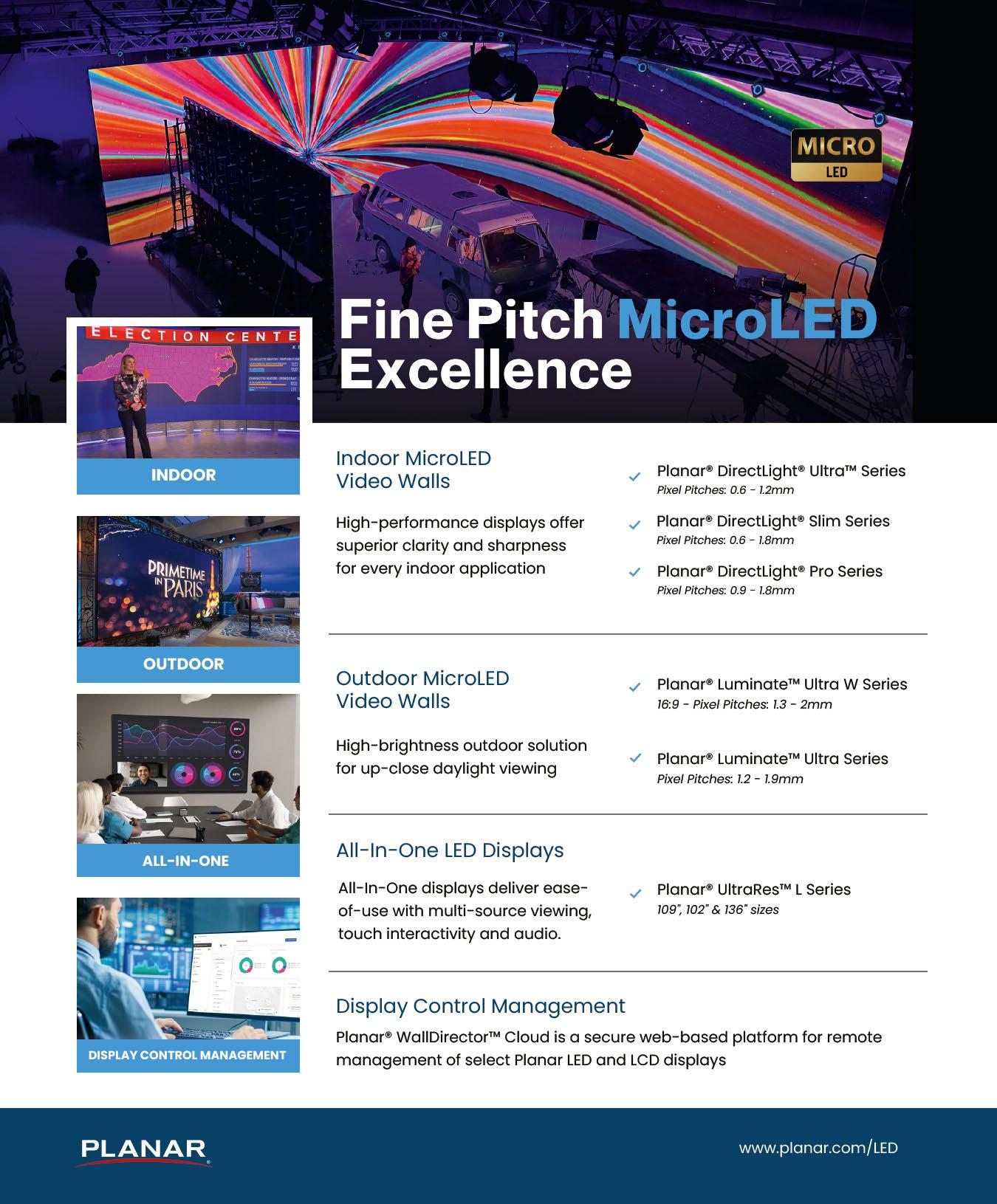


Broadcasters Adopt
Solutions originally designed for corporate spaces are helping broadcasters meet increased content demands.
By Kevin Mortimer
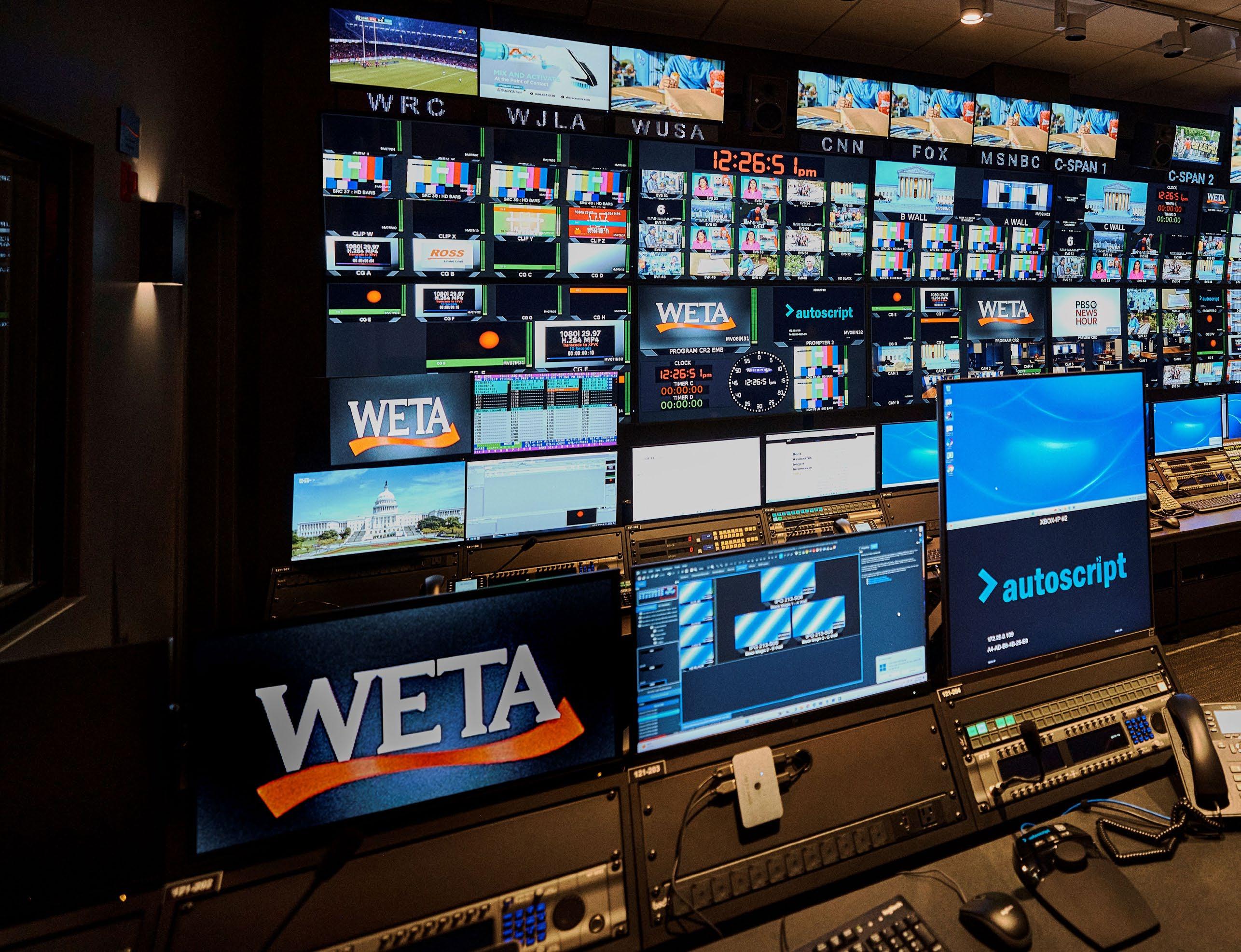
ABOVE:
As broadcasters large and small continue to be challenged with producing more content for an ever-expanding array of distribution platforms, they are always looking to get the job done in the most cost-effective way. This has meant increasingly turning to what were once considered Pro AV products designed for corporate boardrooms, classrooms, and lower tier productions.
These products include compressed networking protocols, PTZ cameras, streaming encoders, compact production switchers, IT networking technology (with low-cost IP network switches),
and off-the-shelf video displays. While originally not intended for high-end “broadcast” systems, these more affordable—and in many cases less featured—technologies are now commonly used at TV stations across the country for creating content supporting secondary OTT channels (streaming over the internet), websites, and mobile phones.
Whether for personal viewing or for contribution between stations, protocols dedicated to this space have migrated to streaming protocols like RTMP and
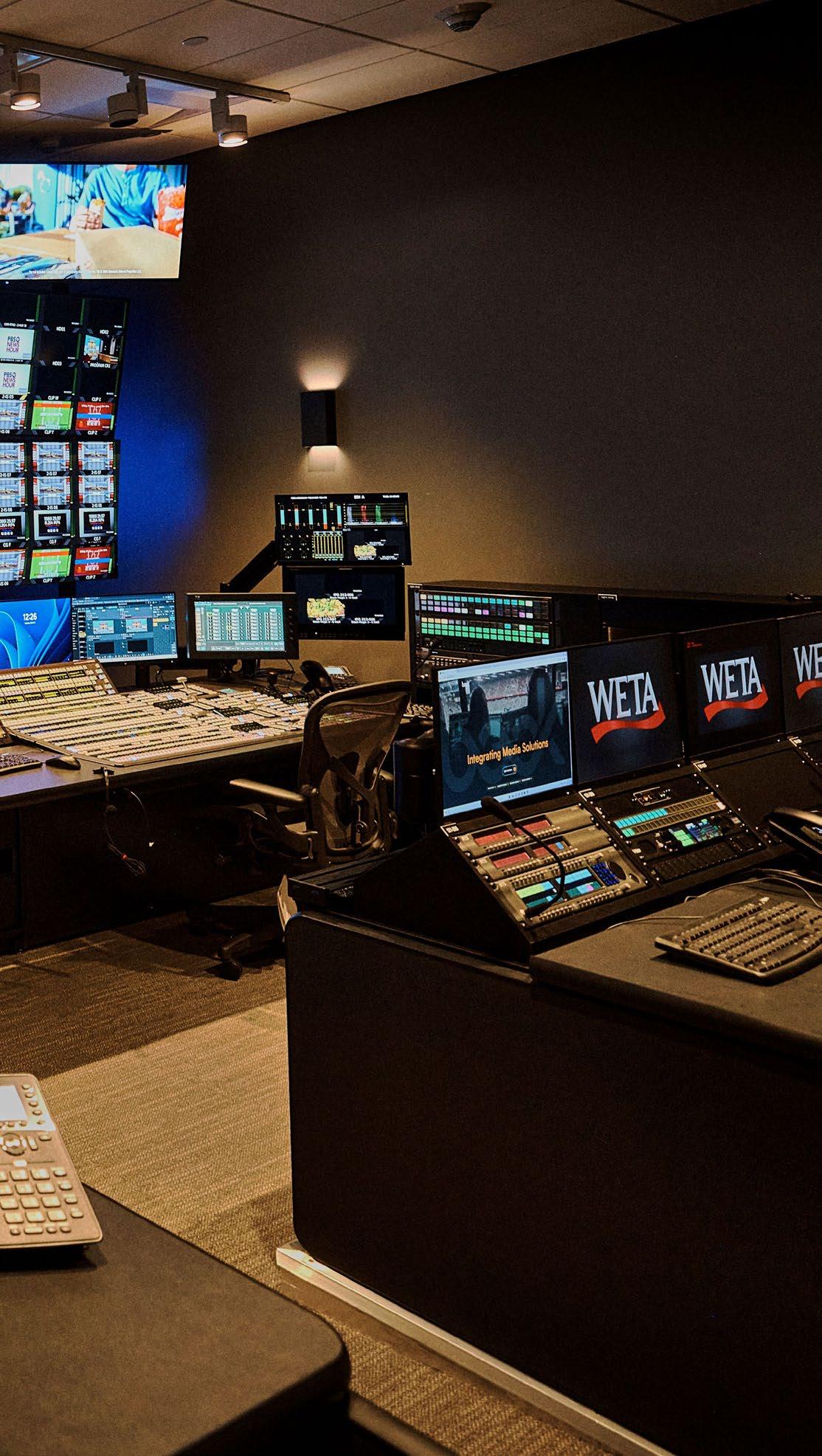
HLS, while internal production networks use solutions like Dante and NDI to help connect and control disparate devices on a network. These solutions introduce compression, which can degrade video quality and disrupt signal flow (timing), but are considered “good enough” for these alternate applications. Again, most big-budget broadcasters would not use these tools for live sports telecasts, but they do for other programming because they are easy to use and reliable.
“NDI has no precise timing, which results in high latency and is compressed, whereas ST 2110 is
“The term ‘broadcast standard’ has been diluted over the course of several years.”
Craig Frankenstein, AVI Systems
completely uncompressed, has strict timing rules, and therefore is not latent at all,” said Brock Raum, senior engineer at systems integrator BeckTV.
“However, if I have a camera in a place where it doesn’t need to be in real time, and I’m not cutting multiple cameras together, then NDI makes a lot of sense to send video, audio, and control over just one cable.”
The company recently completed technical design, facility planning, and integration for the PBS News Hour studios and production facility at WETA, the flagship PBS member station in Washington, DC. “Stations like WETA have digital departments, which tend to buy less expensive technologies in order to get the job done, move very fast and are eager to try new things,” added Brendan Cline, managing partner and VP of engineering at BeckTV.
“And the best part,” added Matt Weiss, VP of business development and managing partner at BeckTV, “is that basically anybody can quickly learn how to use it. We’re seeing the next generation of operators adopting software-based Pro AV systems because that’s what they have grown accustomed to. They don’t want the tactile buttons or the control panels with buttons and larger switches that we’ve installed in in the past. They want macro driven, touchscreens and computers that require a few mouse clicks. It still gets the job done.”
Craig Frankenstein is director of digital media and broadcast practice at AVI Systems, another integrator that works with both broadcast stations as well as smaller production studios. He said there are plenty of Pro AV products that can be successfully used in broadcast environments. The key is whether they can be seamlessly integrated
Looking to take your broadcast to the next level? Meet the PTZOptics Studio 4K – your ultimate fixed camera solution for professional A/V production.
Whether you’re live streaming an event, capturing multi-camera content or integrating into a broadcast workflow, this compact powerhouse delivers stunning 4K resolution with the 12X or 20X optical zoom options needed to frame every shot with precision.
The Studio 4K offers exceptional clarity, even from 100 feet away. Its sleek, unobtrusive design makes it the perfect addition to any studio, control room or on-location setup, ensuring professional-grade results without disrupting your environment.
subjects or key visual elements, seamlessly complementing PTZ cameras to create a dynamic, multi-camera experience.
From control rooms to mobile production setups, the Studio 4K expands creative potential while keeping workflows smooth and efficient. Whether capturing primary shots or a secondary angle for seamless cutaways, the Studio 4K is an essential tool in any professional A/V toolkit.
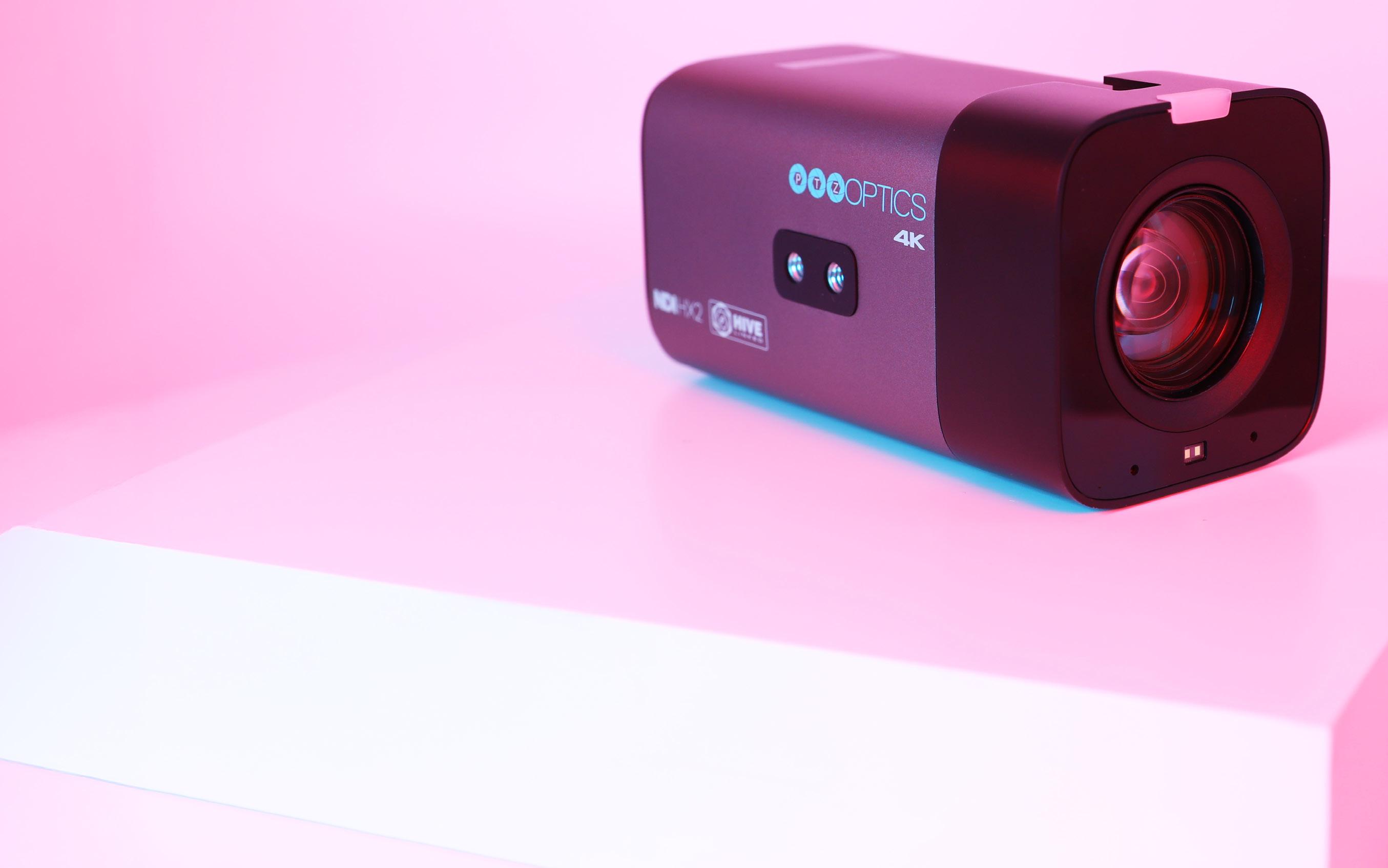
Time is money in live production, and the Studio 4K is designed for quick deployment. It integrates flawlessly into existing broadcast infrastructures with SDI, HDMI, USB, and IP output options. Whether you’re switching live with vMix, producing virtual events on Zoom or streaming via OBS, native NDI® HX2 support ensures ultra-lowlatency connectivity for real-time production demands.

Broadcast technology evolves rapidly, and the Studio 4K is built to keep pace. With Hive-Link™ integration, you can manage and monitor multiple cameras with just a few clicks – no need for complex setups or additional hardware. Whether on-site or remote, configuring and adjusting your camera from any web-connected device ensures your production remains agile and adaptable. Meanwhile, the Studio 4K remains compatible with existing 1080p systems.
Backed by PTZOptics’ industry-leading 5-year limited warranty, the Studio 4K offers reliability and long-term support, making it a smart investment for professionals who demand the best.
With Hive-Link™ technology, the Studio 4K connects to PTZOptics’ Hive Studio platform, allowing for centralized control and remote management from anywhere. Whether you’re directing a live event or managing multiple cameras, you have total command at your fingertips.
Deliver a flawless viewing experience with the Studio 4K’s advanced optics and high-speed imaging. Its robust 4K sensor ensures ultra-crisp visuals, while its powerful optical zoom provides sharp, lossless close-ups – ideal for capturing panel discussions, stage performances or detailed top-down demonstration shots.
Designed for endurance, this fixed camera minimizes mechanical wear and tear, making it perfect for continuous operation in live event production, broadcast studios and corporate A/V environments. Whether mounted in an auditorium, on a broadcast set or in a house of worship, the Studio 4K delivers unwavering reliability.
Enhance your production by pairing the Studio 4K with PTZOptics’ Move SE or Move 4K PTZ cameras. As a dedicated fixed-angle camera, it ensures consistent framing for presenters, interview
4K Ultra HD at 60fps – Broadcast-quality visuals for professional production
12X or 20X Optical Zoom – Capture every detail with precision Compact, Fixed Design – Ideal for studio or venue installations Hive-Linked™ for Remote Control – Manage cameras effortlessly from anywhere
Multiple Output Options – SDI, HDMI, USB, IP, and native NDI® HX2 for versatile connectivity
5-Year Limited Warranty
From live sports coverage to corporate broadcasts, from government meetings to concert productions – the PTZOptics Studio 4K is built for professionals who demand superior quality, reliability and ease of use. It’s time to elevate your A/V production. Visit ptzoptics.com to learn more.




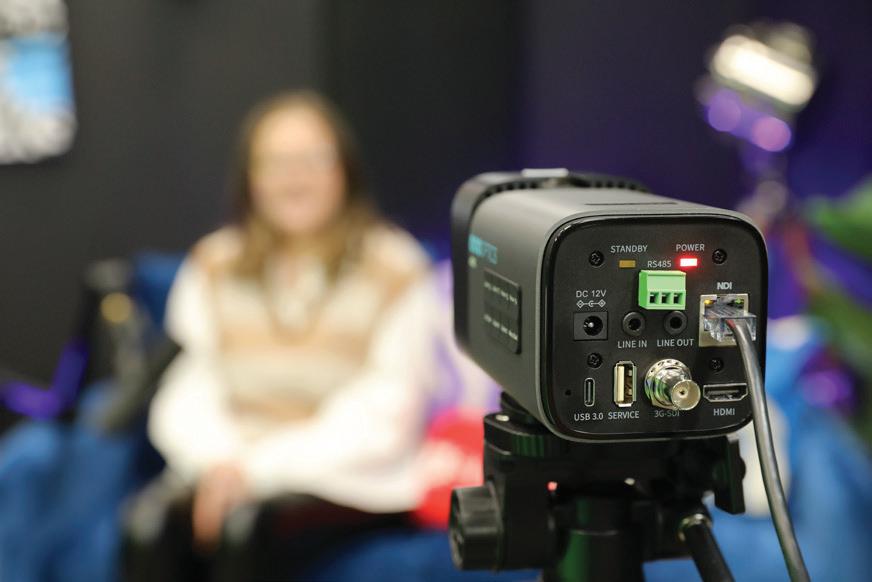
Content Director Mark J. Pescatore, Ph.D.
mark.pescatore@futurenet.com
Senior Content Manager Wayne Cavadi
Contributors Kevin Mortimer
Art Editors
Rob Crossland, Sam Richwood
Production Managers
Nicole Schilling, Heather Tatrow
ADVERTISING SALES
Managing Vice President of Sales, B2B Tech
Adam Goldstein, adam.goldstein@futurenet.com, 212-378-0465
Sales
John Casey, john.casey@futurenet.com, 845-678-3839
Janis Crowley, janis.crowley@futurenet.com, 845-414-6791
Debbie Rosenthal, debbie.rosenthal@futurenet.com, 212-378-0468 Zahra Majma, zahra.majma@futurenet.com, 845-678-3752 Andi Tureson, andi.tureson@futurenet.com, 646-544-0007
SUBSCRIBER CUSTOMER SERVICE
To subscribe, change your address, or check on your current account status, go to avnetwork.com and click on About Us, email futureplc@computerfulfillment.com, call 888-266-5828, or write P.O. Box 1051, Lowell, MA 01853.
LICENSING/REPRINTS/PERMISSIONS
SCN is available for licensing. Contact the Licensing team to discuss partnership opportunities. Head of Print Licensing Rachel Shaw licensing@futurenet.com
SVP, MD, B2B Amanda Dawrman-Allen VP, Global Head of Content, B2B Carmel King MD, Content, AV Anthony Savona VP, Head of US Sales, B2B Tom Sikes Managing VP of Sales, B2B Tech Adam Goldstein VP, Global Head of Strategy & Ops, B2B Allison Markert VP, Product & Marketing, B2B Andrew Buchholz Head of Production US & UK Mark Constance Head of Design, B2B Nicole Cobban
FUTURE US, INC. 130 West 42nd Street, 7th Floor New York, NY 10036




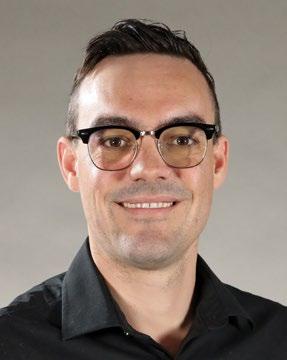



into existing workflows with the right protocols supported.
“Some of the key differences would be what I/O and protocols are supported, like HDMI versus SDI, NDI, SRT, and genlock capabilities for synchronization,” he explained, adding that codec support is one clear difference between true broadcast gear and Pro AV options. “Pro AV gear generally uses high compression, but many of today’s products still maintain an acceptable level of ‘broadcast quality,’ even at low bandwidth.”
While Frankenstein said there’s nothing wrong with TV stations testing more affordable options for cameras, switching, and processing, he advised users to “make sure they define the use case requirements before testing. Validate that the hardware meets operational needs, then test quality and reliability on brands they hope to use.”
“The line [between broadcast and Pro AV products] is blurring, for sure, but it’s not a bad thing,” said Paul Richards, chief revenue officer, PTZOptics, a PTZ camera manufacturer. “What we’re seeing is a real revolution for Pro AV and the continuing development of high-end products for the broadcast industry.
“For the Pro AV folks, they now have relatively inexpensive access to tools like PTZ cameras, switchers, and web-based user interfaces built into those devices, as well as remote production software like our Hive Studio. This software-based platform basically gives any team all the controls that would historically require a remote production truck. So, while we’re definitely not diminishing the experience for broadcast producers, we’re raising the bar significantly for Pro AV users.”
“The difference indeed seems to be shrinking,” echoed Chris Scheck, head of marketing content for Lawo, a manufacturer of networked and standalone audio and video products. “While the best possible audio and video quality remains a necessity for the coverage top-tier sporting events—currently UHD HDR picture quality and immersive audio mixing— other production workflows are already being used for niche and lower-tier events. Certain Pro AV solutions are certainly good enough for such applications.”
A focus on quality becomes irrelevant when what
counts is to cover breaking news in a speedy fashion or to conduct interviews under challenging conditions. “For such occasions, Zoom, Skype, Microsoft Teams, etc., on a smartphone can be a lifesaver,” Scheck said. “Along with a growing trend towards remote and distributed production scenarios, this may be one of the big takeaways from the pandemic.”
Meanwhile, some of the cameras developed by PTZOptics for the Pro AV side of the business are now regularly used in broadcast settings. For example, PTZ cameras and dual-lens cameras that were developed to satisfy a need in the videoconferencing and remote learning space are today proving their value in areas like sports coverage. Likewise, auto-tracking features that were developed originally for the meeting or lecture room can now be used to provide automatic control for cameras covering games.
As more organizations move to IP-based workflows, can any technology be used in broadcast, as long as it’s the right tool for the job? “Well, I wouldn’t say anything,” Richards cautioned, “but it feels like we’re not far away from that, doesn’t it? Broadcast users are always going to have extremely high expectations and standards, and we [as a vendor] acknowledge that. However, with the explosion of streaming starting in 2020 and the advancements made since then, it is amazingly simple to produce a high-quality stream or show with a small, relatively inexpensive system.”
Lawo has taken a unified applications platform approach with its HOME software, effectively making any of its components the right tool for the broadcast or Pro AV job at hand. “Care needs to be taken, though, to provide an intuitive user interface … that hides any unnecessary complexity from operators, while the underlying devices or software apps need to allow engineers to deep-dive into the feature set in order to achieve the perfect outcome,” Scheck explained. “IP networking has been around for over two decades now because it simplifies connecting devices and servers to one another—and eliminates hum issues caused by analog cabling and the need for bulky snakes.”
Up/down/cross conversion and stream
transcoding are just two services offered by Lawo’s HOME apps that can be leveraged in hybrid broadcast/Pro AV setups. “As more shows involve live coverage by broadcasters, or by the artists themselves for their web offering, etc., a converged, mainly app-based processing setup that serves both the broadcast and the Pro AV spaces increasingly makes sense—provided it is able to receive a variety of IP transport formats and transmit all essences in the formats expected by the various destinations,” Scheck added.
“I find that broadcast often has stricter requirements for resolution, whereas Pro AV has a larger range of acceptable resolutions,” said Rick Seegull, SVP of technology and business development at Riedel Communications, a German manufacturer of audio and video products for both market segments. “Broadcasters, at least historically, have always been looking for longterm quality and reliability, so build quality has always been of the utmost importance. Pro AV is sometimes seen as being fast on their feet, setting up concerts or events quickly, so ease of use and the ability to work with different equipment has always been important there.”
He said that some Pro AV networking standards, such as NDI, have enabled cloud production and remote production, as the protocol’s compression and relatively low latency have allowed video to be sent over global networks across long distances via decentralized networks. In addition, Seegull suggested using a mix of Pro AV products in the broadcast production chain can streamline workflows, depending upon the product. So, each product needs to be evaluated on its own merit, but most importantly on how it fits into the workflow to
“I think we’ve reached a point where it’s a question of using the right tool for the right job.”
Rick Seegull, Riedel Communications
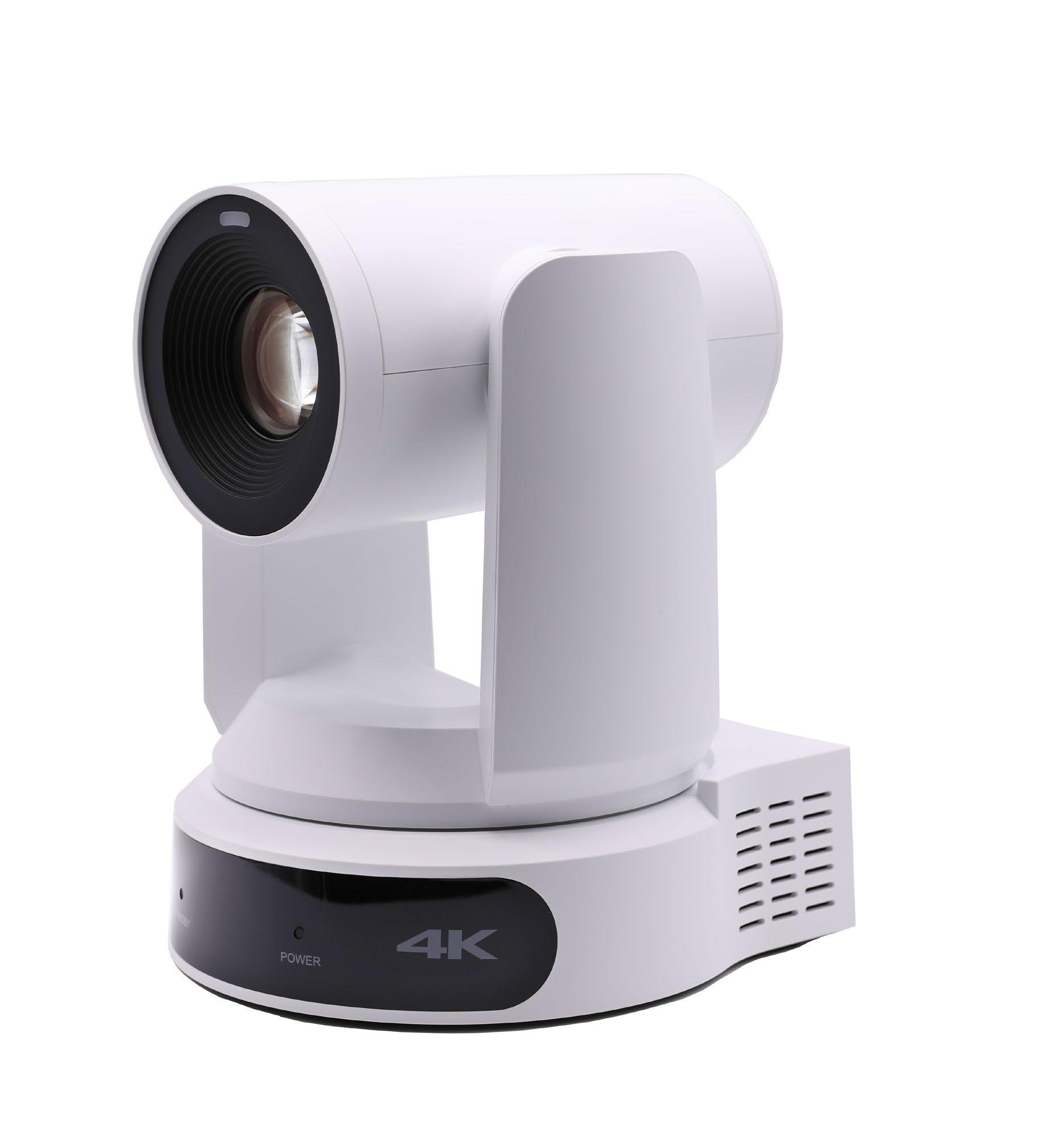
make sure content is always within specifications for the desired production.
“I think we’ve reached a point where it’s a question of using the right tool for the right job,” Seegull added. “If you need something low latency and high quality, SMPTE ST 2110 is your best bet, but if you are going to be sending video to the cloud or compressing it, and you don’t care as much about resolution or latency, then there are other tools out there, including Pro AV tools. That being said, there is work within [both] industries to help bridge these two classifications to make sure neither is compromised.”
Lawo’s Scheck said Pro AV technology can successfully coexist in the broadcast space and lead to increased productivity. “Several Lawo projects have involved architecting highly automated, self-operating radio and TV studios where PTZ cameras and automix audio functions play an
important part,” he offered. “Coupled with software that analyzes the footage and switches cameras as needed, this approach allows broadcasters to literally produce more with less. While other projects involve SMPTE ST 2110-compatible robotic cameras for news shows and other relatively ‘static’ sets, the adoption of NDI and/or SRT-savvy PTZ cameras is rapidly gaining ground.”
As another example, at the 2025 Lancaster Archery Classic, in January in Manheim, PA, a production team combined traditional broadcast technology with common Pro AV equipment. PTZOptics cameras were used to zoom into the archery targets and magnify the view on the large LED screens for in-person viewing. As Richards recalled, the HDMI video outputs from the PTZOptics cameras were used for local confidence monitors for the archers, while the SDI video outputs provided coverage for the broadcast team using a Ross Carbonite video switcher.
“Many small events start out with a couple of cameras and a small live streaming system,” said Richards. “Over time, as the event gets more popular, systems grow to accommodate in-person attendees, which requires more traditional audiovisual equipment. The Lancaster Archery Classic started with a small broadcast, but over the past eight years they have grown their YouTube channel to over 120,000 subscribers. While the event draws 3,000 in-person visitors, the livestream had well over 6,000 online viewers. As smaller live broadcasts grow in popularity, in part by leveraging social media and online connectivity, in-person attendance also grows and the need for Pro AV equipment to support the event continues to grow.”
“Generally, you get what you pay for, but there are professional AV components that are good enough for broadcast,” added Frankenstein. “There are plenty of affordable options for cameras, switching, processing, encoding, and transporting high-quality signals. The term ‘broadcast standard’ has been diluted over the course of several years. A great deal of Pro AV and even consumer-grade equipment gets used for broadcast every day. A good operator can get quality content from a variety of sources.”
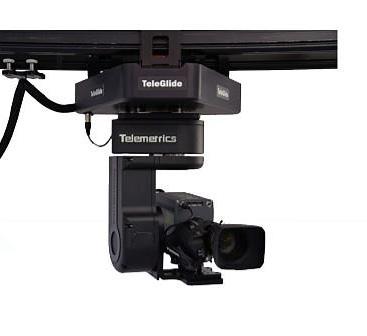
When contemplating the purchase of robotic camera systems, regardless of the application, customers should consider the upfront costs and the long-term proposition of what it takes to operate and maintain that system over its lifespan.
The key to getting the best return on investment is to look at the total cost of ownership (TCO) or the actual cost after several factors are taken into account. It’s an estimation of the expenses associated with purchasing, deploying, using, and maintaining a complete system or a single piece of equipment.
With less expensive (and less featured) systems from other vendors, you might have lower upfront costs, but you’ll spend twice the original price maintaining and upgrading it as time goes on. Quality is also critical to avoiding the unexpected cost of replacing equipment that does not stand up to years of use. Telemetrics systems are renowned for their longevity, robustness, ease of maintenance and minimal repairs.
Therefore, when evaluating a three-camera setup with a fully featured RCCP-2A control panel working in tandem with a complex TeleGlide track system or a Televator elevation column with a RoboEye 4K Pan/Tilt, consider how it will affect your overall production studio operations budget.
Think about the TCO of that system before you buy because sometimes, the initial purchase price is a drop in the bucket compared to what you will spend over its lifetime.
Spending more upfront for better quality could save you thousands on the back end. And, when committing your production studio, event space, government chambers, house of worship or educational environment to robotic camera control systems, that’s important to understand.

By Michael Cuomo, Vice President, Telemetrics, Inc.
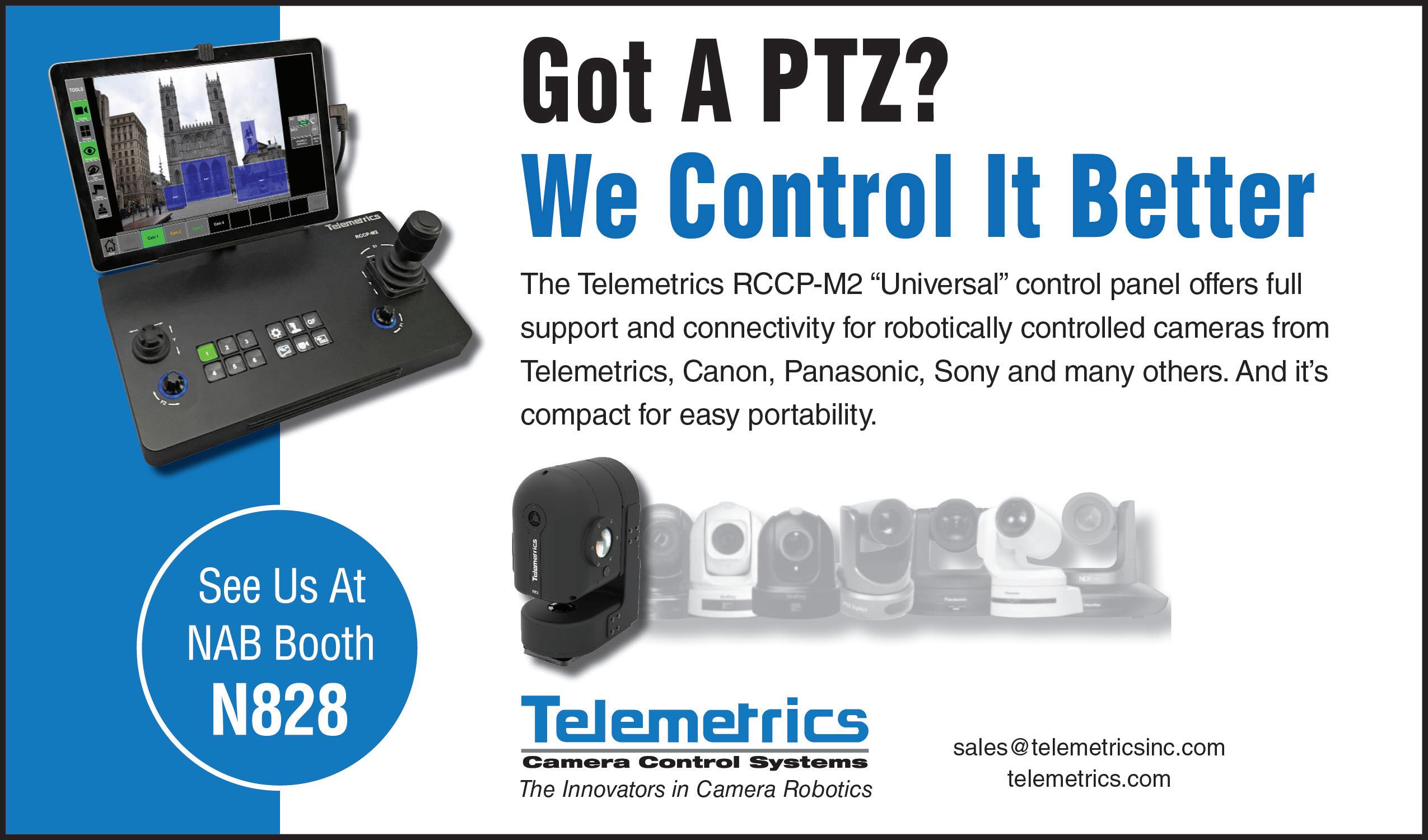
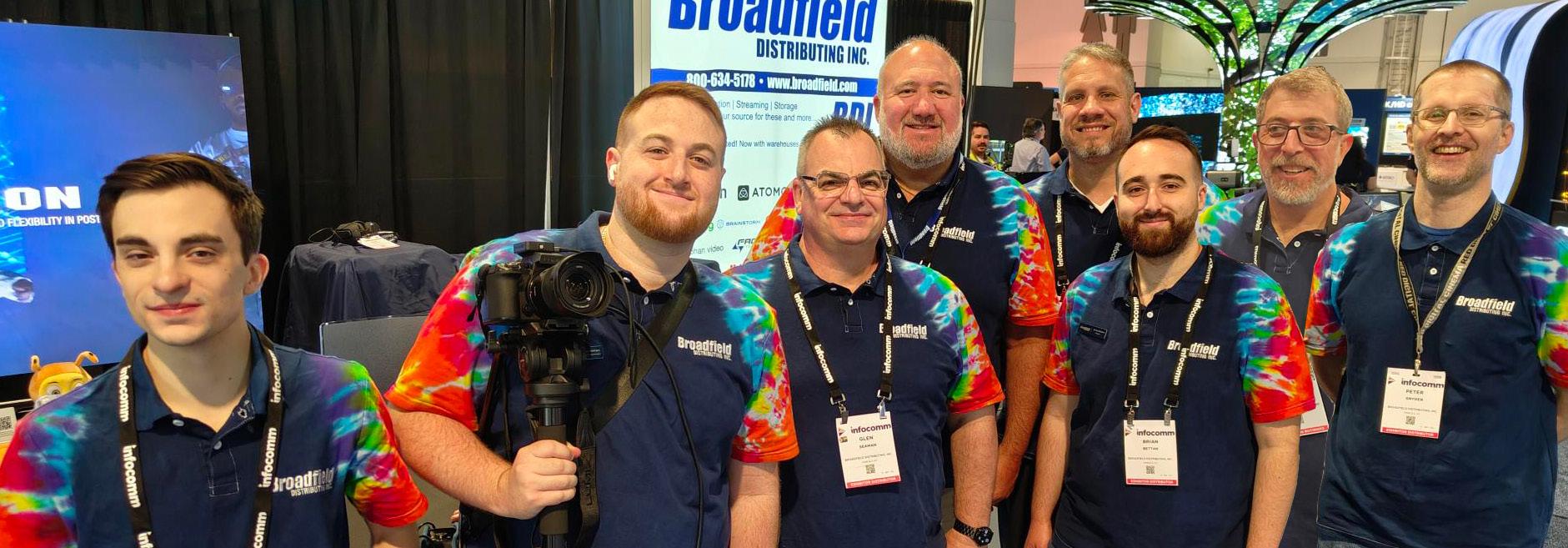
Broadfield Distributing is a family owned and operated distributor that has been servicing thousands of resellers in the pro video marketplace for the past 30 years. We have grown with the changes in the industry, and now we are pleased to offer hardware and software systems from more than 40 manufacturers and thousands of products in stock, ready to ship, from our large distribution center in Long Island, NY and our newest location in California, BDI West. When you make Broadfield your preferred distributor you put your company in a position to increase both your profits and your market share. We call this “The Broadfield Advantage”, and this is why we are your BEST choice as distribution partner.
Understand the products you sell.
We produce video content and sales sheets and offer technical advice, support and training. When you buy from Broadfield, you get to leverage our product expertise and we will help you be a better supplier to your customers, sell more products and grow your business.
Find the opportunities in your market
We can help you create strong partnerships with our sales team and our vendors to help plan your marketing and sales promotions in advance, allowing you to grow your business and be more profitable.
We are always working hard to create profit opportunities for you. We offer special bundle opportunities that you can use to increase your sales and profits. We are constantly searching for and finding complimentary products and add-ons that you can sell to your customer base and have expanded our catalog to include SAAS and Cloud-based solutions to help you bring the latest and most innovative solutions to your clients.
We are committed to having inventory on hand to be able to ship same day from either NY or CA. We will also work with you to manage long-tail sales and
Watch our Broadfield “Liquid Lunch & Learn” Dealer webinars LIVE! Every Thursday at 1pm ET at www. broadfield. live. Crack open a beer and stay up to date on the latest sales tips, new products and opportunities in the industry.
OFFERED
• Live production and streaming solutions
• NDI production systems, cameras & converters
• ST2110 Production solutions for broadcast AVIP systems LED Display solutions & Video Walls
Video storage solutions
• Mixers and switchers
• On camera monitors, recorders, and playback
• PTZ, Mirrorless & Cinema Cameras
• Church, live event, and sports production equipment
major projects by getting all of the products together and held to meet your project installation date and deadlines. Our sales, purchasing and engineering team will work with you and our vendors to help in every step of the coordinated efforts.
Our reps are here and ready to help you with your orders. While you’ll be assigned a lead rep, everyone on our sales team is available to you. Our reps work closely together to make sure you get the information, service and support you need. Our sales engineers can help you build quotes, verify project requirements and even help arrange demos and evaluations.
BRANDS DISTRIBUTED
• Absen Panasonic
• PTZOptics
• Facilis Epiphan Video
• Atomos RED
• Avid
• Seagate / LaCie
• Matrox Netgear
• Vizrt
• Canon LiveU
• BirdDog
• Kiloview JVC Professional LUMIX
• SanDisk Professional MRMC
• YoloLiv And many more...
You’ll like doing business with Broadfield because we make it easy to do business!
Broadfield Distributing
179 Liberty Ave, Mineola, NY 11501
Phone: 800-634-5178 or 516-676-2378
Email: broadfield@broadfield.com Web: www.broadfield.com
Our dealer sales staff is available Monday-Friday, 9am to 5pm ET to help answer any questions you may have regarding our products, system recommendations, compatibility, features, and more.
Call us at 800-634-5178 to speak to your salesperson.

The AV industry has been undergoing a transformative shift toward IP-based infrastructure, offering greater flexibility, scalability, and efficiency. As the demand for high-performance video distribution and processing grows, integrators and end users need reliable solutions that streamline the transition to IP without compromising quality or performance. Matrox Video is at the forefront of this evolution, providing a portfolio of advanced devices that bridge the gap between traditional AV systems and IP-based workflows.
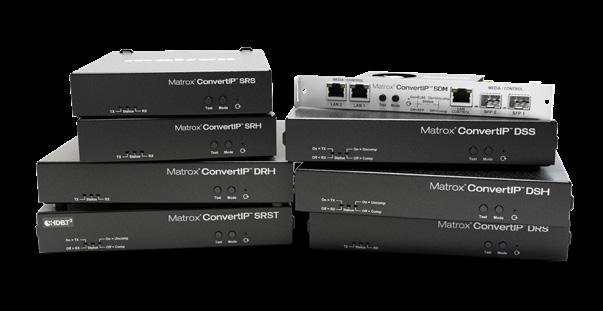
Matrox ConvertIP is a series of ST 2110/IPMX-ready baseband converters and encoders/decoders. Effortlessly convert SMPTE 2110 signals between HDMI, HDBaseT, or SDI using multiple input/output connectivity options. ConvertIP is compatible with various network capacities, including 1G, 2.5G, 10G, or 25G. Its applications include encoding, displaying, monitoring, and transmitting compressed and uncompressed 4K, zero latency video. The Daisy Chain feature enables the reception and output of multiple streams from a single network port. Expanding on this innovation, the latest in the series is Matrox ConvertIP SDM, an Intel® Smart Display Module (SDM) that supports ST 2110 and IPMX inputs, offering a universal interface to receive and display ST 2110 and IPMX signals on any SDM enabled display or projector. Featuring two RJ45 and two SFP28 ports on a single device, ConvertIP SDM is designed for compressed or uncompressed workflows up to 25G and is optimal for zero latency applications.
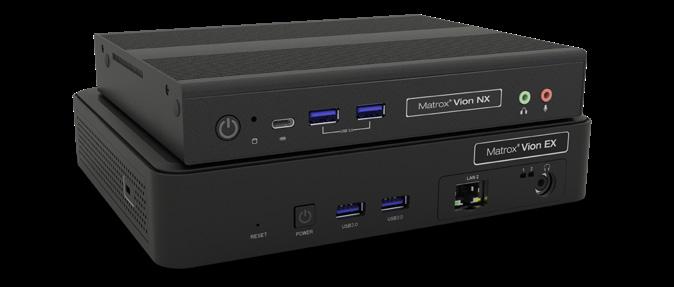
Matrox Vion is a compact, multichannel 4K capable IP video gateway for media processing and conversion. Vion provides flexible, low-latency multi-channel encoding, decoding, transcoding, and cross-conversion of IP video formats and codecs like H.264, HEVC, JPEG XS and NDI. This IP video gateway supports the IPMX suite of open standards and specifications, and protocols like SMPTE ST 2110-22, SRT, RTSP, RTP, and MPEG-2 TS for flexible routing workflows, such as transcoding an
NDI source for delivery over the web using SRT. With support for 4:2:2 10-bit and 4:4:4 10-bit codecs and optional HDMI 2.0 and 12G-SDI inputs, Vion can maintain both desktop and broadcast video content details, manage color space conversions, streaming protocols and bitrates, and transmit multiple concurrent streams—making it ideal for live production, collaboration, and local/cloud IP workflows.
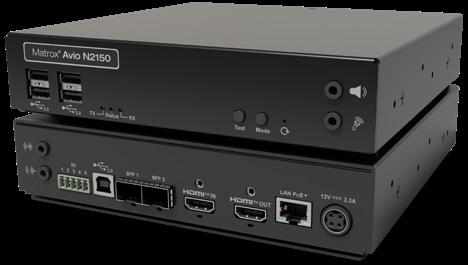
Avio 2 : 4K HDMI IP KVM
Matrox Avio 2 marks a significant advancement in IP KVM technology by delivering real-time KVMA signal extension, control, and routing over the network. It provides unparalleled image quality, supporting 4K60 4:4:4 resolution with uncompressed streams on 10GbE networks, or visually lossless streams on 1GbE networks using the Pro AV or JPEG XS codec. Avio 2 ensures secure, real-time performance for mission-critical applications that require remote access to computing equipment. As the world’s first open standards-based IP KVM, Avio 2 leverages IPMX, SMPTE ST 2110, and NMOS to offer scalable and flexible connectivity. Its deployment accommodates fiber or copper cabling, and power redundancy with PoE+ for uninterrupted operation. Protect data privacy with encryption for audio, video, and USB signals, and control device access through user management. Avio 2 is ideal for control rooms, medical applications, broadcast studios, and live events.
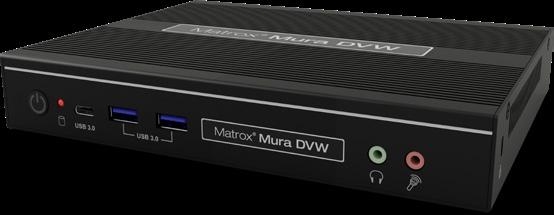
Matrox Mura DVW is a highperformance IP-based 4K distributed video wall appliance that enables you to combine multiple units in various arrangements to easily create a fully synchronized video surface of any size. Mura DVW integrates advanced computing, networking, video decoding, and graphical processing capabilities to deliver seamless visual experiences. Drive up to 64 4K synchronized displays from a range of sources and eliminate tearing by synchronizing DVW appliances together using IP-based PTP framelocking. Moreover, Mura DVW supports incredibly high-density and flexible decoding—up to one 8K60, four 4K60, eight 4K30, sixteen 1080p60 streams—all in H.265 (HEVC) or H.264 (AVC).
Visit Matrox Video at NAB 2025 Booth SL4511

Take your live productions to the next level with Matrox Video. At Matrox Video, we provide live productions with future-proof,
Previously two distinct industries, broadcast and proAV now share more in common than ever. Today, AV professionals are employing broadcast-grade equipment to deliver higher-quality video in educational, business, government, conference and event, and house of worship environments. Similarly, broadcasters are embracing interactive tools historically used in AV to set their content apart.
With the divide between the two industries narrowing each year, it’s only natural there are parallels between the trends shaping both. From IP and cloud transitions to the move to high dynamic range (HDR), these shifts are redefining how high-end video is created and distributed, making content and the production methodologies behind it more accessible.
Online video consumption accounts for more than 80 percent of consumer internet traffic, so it’s no surprise that the production workflows behind video streaming in broadcast and proAV are moving in this direction too. “IP or hybrid IP production workflows make sense because they bridge the gap between content creation and delivery,” explained AJA Sr. Product Consultant Abe Abt. “As a result, SMPTE ST 2110 and NDI implementations are becoming more common in broadcast and proAV, and momentum for Dante AV is building as the technology matures.”
As both markets look to take advantage of IP video, Abt noted that maximizing legacy baseband SDI investments remains a key focus. “Now is the time to get up to speed on how IP works, start learning all that you can, and explore bridge technologies that will allow you easily move between SDI and different IP approaches, video protocols, and codecs,” he said.
technology also makes it easier for smaller productions to use larger personnel and resource pools, thereby enriching content and improving the end product for everyone, and I find that very exciting!”
With this development, Abt stressed the importance of investing resources in cloud education, placing an emphasis on identifying best practices and technologies for moving video from the ground into a cloud-based pipeline. Abt added, “It’s important to start building a general video technology foundational knowledgebase today, and there’s a lot that the proAV and broadcast industries can learn from one another.”
Across broadcast and proAV, Abt said the forecast is metaphorically and literally bright, given growing enthusiasm for high dynamic range (HDR) workflows. With each industry starting to embrace HDR content production and delivery among other cutting-edge production techniques, the visual quality of halftime shows, a university lecture, or YouTube video can now almost rival that of a blockbuster film.
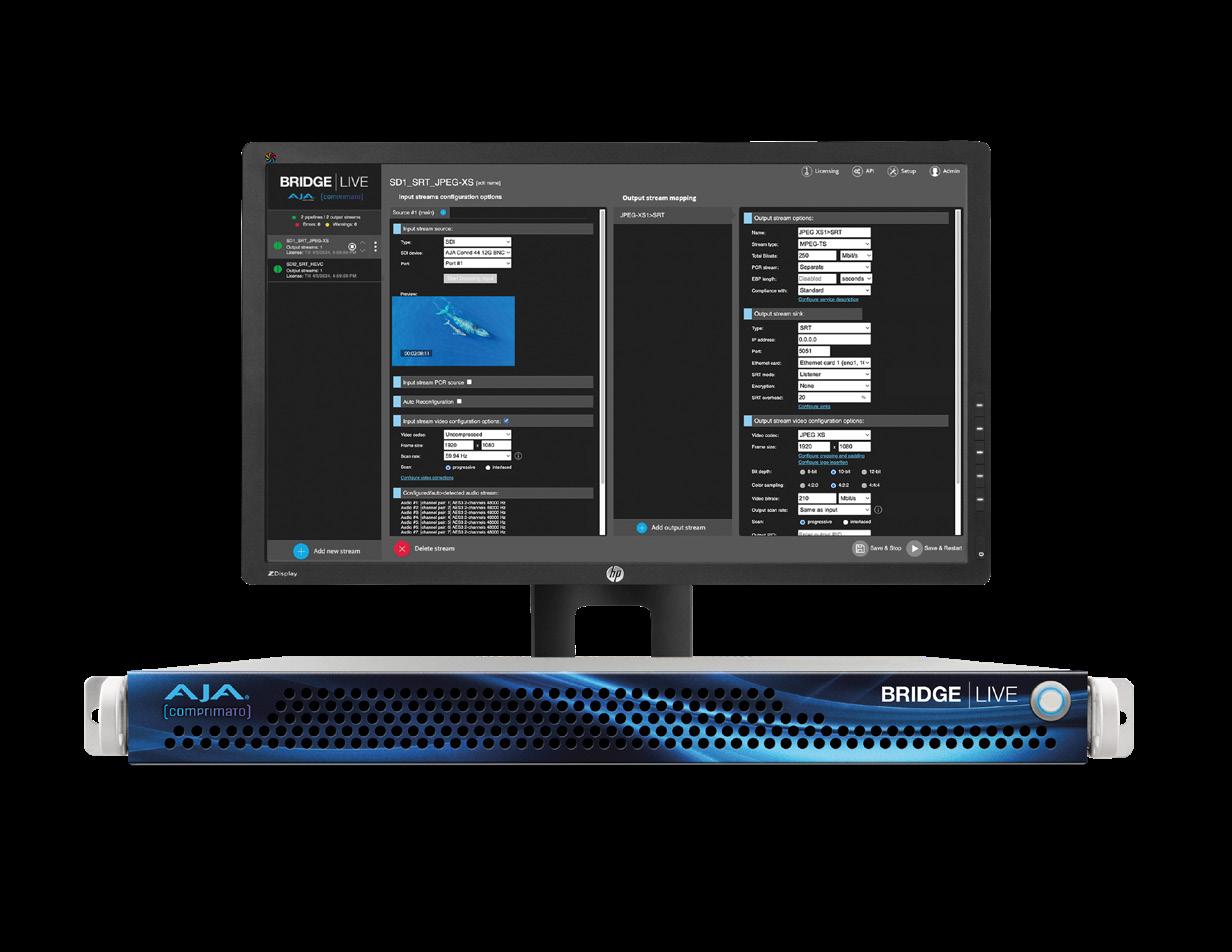
“A lot of this is thanks, in part, to an increasing focus on color and color management,” Abt explained. “More live productions are employing multiple cameras and leveraging advanced, cinema-grade color management to ensure a consistent look when combining those signals. Broadcast-quality frame synchronization is also crucial to this process, ensuring that footage is in lockstep and the viewer sees a seamless production.”

From live streaming earnings reports to Hollywood awards shows, the cloud is being leveraged to create and deliver more live content across both industries. Abt believes this trend is introducing new production efficiencies. “The cloud enables teams to collaborate remotely, reduce their on-site technology footprint, and save on travel costs,” he shared. “Cloud

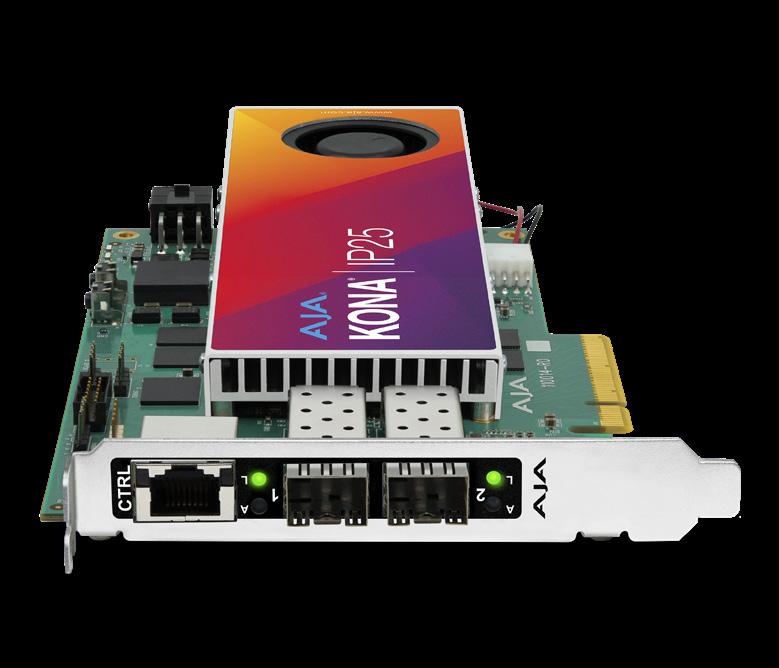
While Abt is confident these developments introduce new opportunities, he says they also bring new challenges, which will require both industries to adapt, just as they did with the transitions from analog to digital and SD to HD. “As they do,” he concluded, “AJA remains committed to developing solutions to help them bridge the gap between present and future technology infrastructures.”
Uncover solutions that can simplify IP, cloud, and HDR transitions via www.aja.com









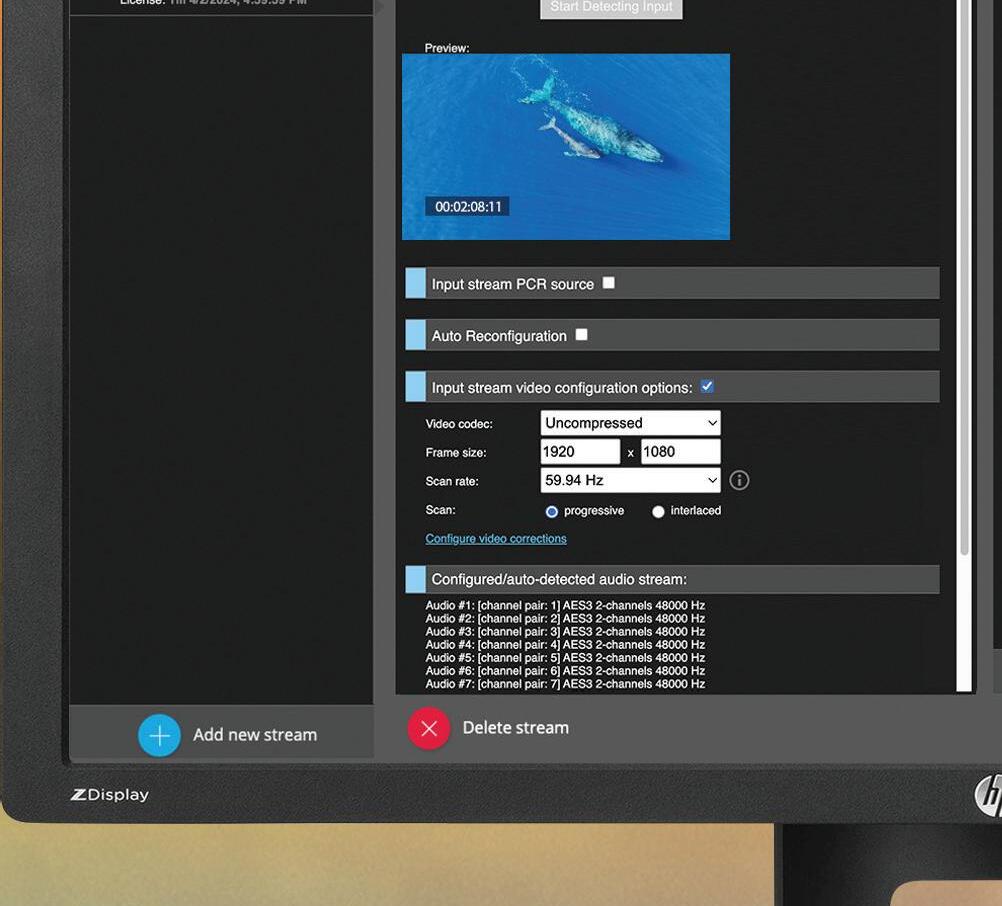
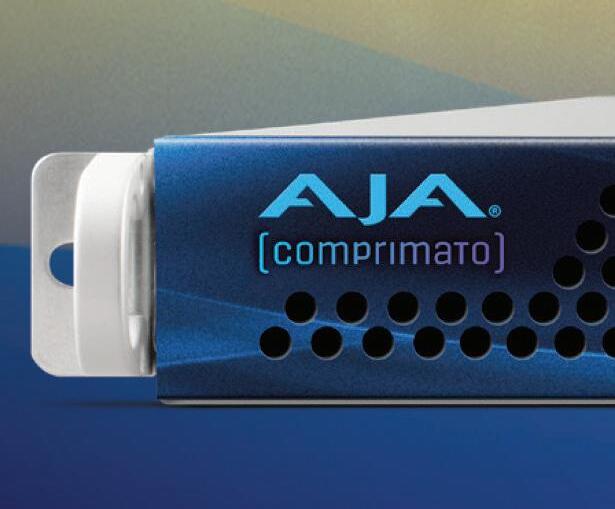
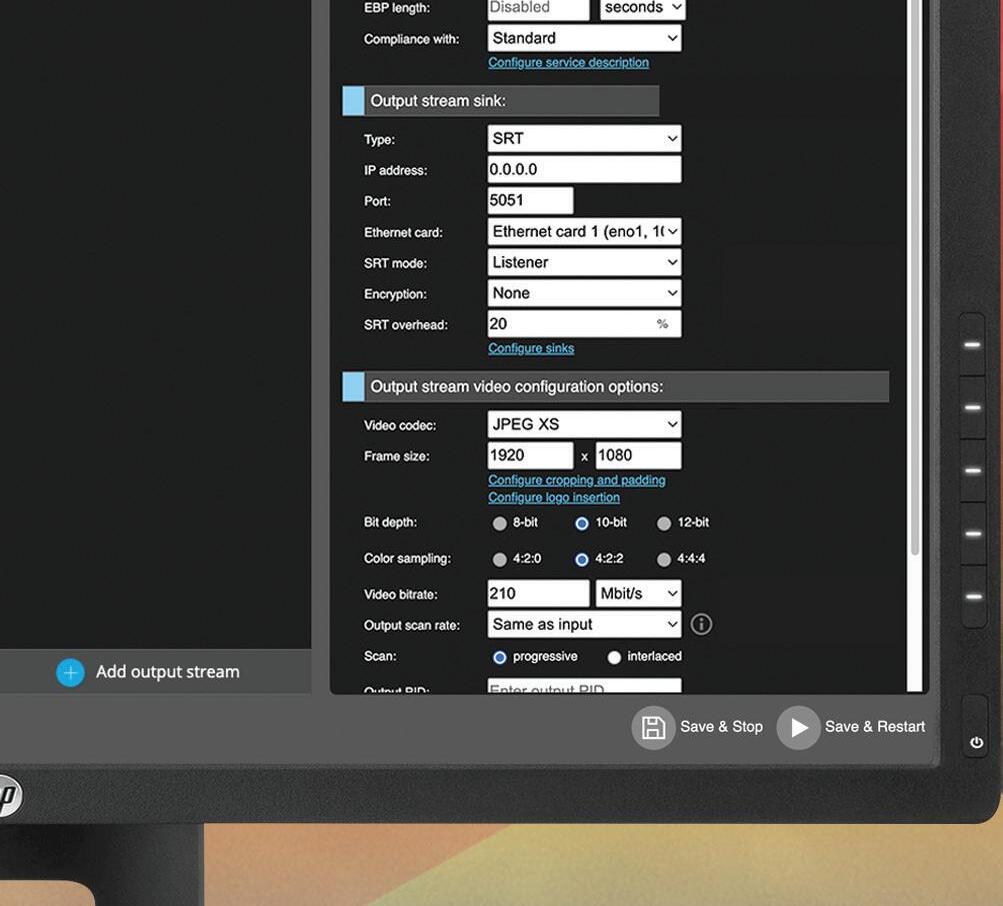



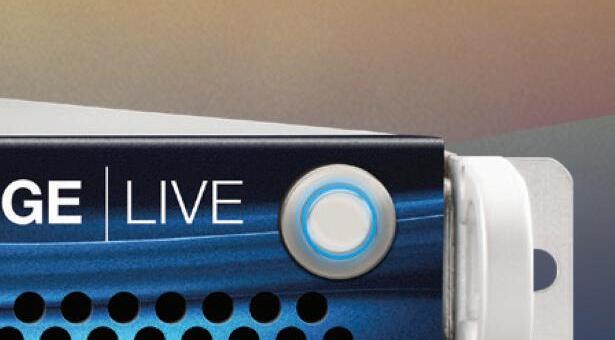
BRIDGE LIVE is the high-end, robust, turnkey system for broadcast-quality, multi-channel, low-latency UltraHD and HD Remote Production and Collaboration, Contribution, Streaming, and Delivery.
With Incredible format and codec flexibility, BRIDGE LIVE supports H.264, H.265, MPEG-2, as well as optional JPEG-2000 and JPEG XS. Protocol support includes SRT, UDP, HLS, RTP, RTMP/S, and MPTS.
BRIDGE LIVE offers powerful NDI abilities, including encoding and decoding to/from SDI, and realtime transcoding between all supported IP protocols along with advanced features such as Synchronous multi-channel support, ABR handoff, and frame rate conversion within the same clock domain.

BRIDGE LIVE’s powerful video transport capability is further enhanced with multiple audio codecs like AAC, AC-3, Dolby E, and PCM as well as metadata support with captions, SCTE support, embedding in SEI, EPG, and SDI VPID signaling for HDR.



BRIDGE LIVE offers seamless compatibility with top streaming CDN services and more.





Convergence is happening between broadcast and Pro AV technologies. But don’t take our word for it. SCN reached out to integrators and manufacturers to get their perspectives on this growing trend.
Admittedly, this might be a trick question: Is Pro AV moving toward broadcast or is broadcast moving toward Pro AV?

Liam Hayter, Product Manager, Vizrt
It is both. Broadcast television has historically been the standard for excellence in visual storytelling, but that is because technology was limited and expensive. Now that technology is progressing at a rapid pace—and at the same time, it’s helping simplify workflows at a more accessible price point—stunning and dynamic visual storytelling is achievable for productions of all sizes.
With remote meetings as part of the daily lives of so many, we have learned to be on camera and present better. Since people are now comfortable with that, they want to create more dynamic and creative experiences for any audience, from internal communications to external presentations.
From the broadcasters’ perspectives, there is a huge incentive to do as much as possible with less. This makes the simplified and accessible technology an attractive solution. Therefore, shifting needs from both industries propel them together, without replacing either.
Broadcast AV is already happening, and it’s moving quickly, but it’s a third space being created, not one to replace its origins.

Brandon Brunhammer, Enterprise Broadcast Practice Lead—XTG, AVI-SPL
The question is a complex one with no definitive answer. This convergence has been a topic of discussion in the AV industry for years, reflecting the fluid nature of technological advancements and market demands. The future of Pro AV and broadcast lies in their continued convergence. As technology evolves, the lines between these two realms will blur further. We can anticipate more sophisticated, integrated systems that offer seamless transitions between live, virtual, and hybrid environments. Innovations in artificial intelligence, augmented reality, and immersive experiences will likely drive this evolution, pushing the boundaries of what is possible in both Pro AV and broadcasting.
Ultimately, whether Pro AV is moving toward broadcasting or broadcasting is moving toward Pro AV is less important than recognizing the symbiotic relationship between the
two. They are increasingly becoming one, driven by the need for highquality, flexible, and efficient communication solutions in a rapidly changing world. That convergence is a testament to the adaptability and innovation within the AV industry. As we move forward, this dynamic interplay will continue to shape the future of AV, offering new opportunities and experiences for creators and audiences alike.

Heather Sidorowicz,
President, Southtown Audio Video
It’s less about one moving toward the other and more about a natural convergence. I believe broadcast is leveraging Pro AV’s agility, scalability, and cost-efficiency, while Pro AV is adopting the precision and reliability of broadcast workflows. The real shift is in the demand for flexible, IP-based, and AI-driven solutions that make content creation and distribution more dynamic than ever.

Nancy Diaz Curiel, Regional Sales Director— Corporate EMEA, Ross Video
The trend we are observing from our customers and partners is that
By Mark J. Pescatore
there is an increasing demand for high-quality, engaging live video production, be it for corporate events and communications, legislative and governmental meetings, live events and stadiums, or broadcasters. In many cases, demand is also constrained by limited resources. People want to increase the engagement of the external or internal audiences while elevating their brand.
Beyond budget, why would broadcasters consider using Pro AV solutions in their production spaces?

Heather Sidorowicz, President, Southtown Audio Video
Broadcasters need solutions that are flexible, scalable, and easy to integrate—and that’s where Pro AV shines. Pro AV solutions enable faster deployments, intuitive operation, and interoperability with existing systems. They also open the door to new creative possibilities, like immersive video walls, AI-powered automation, and advanced audio processing without adding unnecessary complexity.

Liam Hayter, Product Manager, Vizrt
Shifting audience habits are a huge influence, and broadcasters embracing streaming have encouraged the demand for Pro AV solutions in their production spaces.
Audiences nowadays are accustomed to having as much content as they want, available to them in any platform, accessible in any device. TV is just another screen or another display, alongside computers, phones, tablets, and more. With the solutions and tools available and accessible today, viewers expect that same broadcast highquality regardless of the device used to consume content. Pro AV solutions can prove to be more budget-friendly and flexible, without compromising on the quality of the visual elements and production workflow.

Mark Coxon, Director of Strategy and Markets—XTG, AVI-SPL
NDI and SRT streams have made video extractable and portable over the network, modernizing more traditional point-to-point cabling and hardware-based switching topologies. Virtual production tools, cloud-based control, the emergence of Dante for networked audio, etc. all add to the shift. PTZ cameras with interchangeable lenses, UHD sensors, and triggerable presets are acceptable alternatives for capturing high-end content. Just as over-the-top distribution and on-demand content have revolutionized the way we consume broadcasts in our homes, IP and Pro AV technologies are revolutionizing broadcast designs and workflows as well.

Ben Escobedo, Market Development Manager, Shure
When a broadcast production demands rock-solid wireless microphone performance, they seek the best-in-class options. Pro AV has similar reliability requirements to live broadcasts, and both camps are aiming for 100% uptime.

Satoshi Kanemura, President, FOR-A America
NDI and Dante are popular choices in Pro AV setups and have become de facto standards for the AV industry. They are often used together—NDI for video distribution and Dante for audio networking—to create a fully IP-based workflow. Implementing ST 2110 can still be costly and is not as interoperable yet as more mature technologies. This creates a market for alternatives like NDI and Dante among second-tier sports or local stations that cannot afford ST 2110 solutions or do not require zero latency and no compression. High resolution picture quality and ultralow latency are always critical for high-end broadcasting, and that comes at a cost. However, some markets prioritize cost-effective solutions with sufficient picture quality. NDI and Dante have been adopted by some broadcasters as they provide a more economical and intuitive solution for production.
What are some examples of Pro AV products and technologies that are being used in broadcast production environments?

Ben Escobedo, Market Development Manager, Shure
Without a doubt, Shure’s Axient Digital wireless microphone line has become ubiquitous in both broadcast and Pro AV applications. When it was released in 2017, many broadcasters, touring companies, Broadway productions, and others sought a digital solution to replace their soon-to-be illegal analog microphones following the FCC spectrum repack.
Additionally, we are now seeing a cross-pollination of Shure MXA array microphone technology, typically used for conference room applications, into broadcast and Pro AV environments. This is due to their ease of deployment, audio-over-IP capabilities, and microphone pattern control. For example, array microphones are now used to capture audio from reporters during press conferences. The ability to steer the microphone pattern without physically moving the mic is a game changer for audio professionals.

Satoshi Kanemura, President, FOR-A America
Intuitive user interfaces that appeal to a younger operator like touchpanels and web GUIs are making their way from typically Pro AV environments to broadcast studios and mobile trucks.

Mark Coxon, Director of Strategy and Markets—XTG, AVI-SPL
Pro AV solutions are finding their way into broadcast systems
because they offer flexibility in transport, simplicity in design, and reduced headcount to operate, while still providing a high-quality end product. Products like Vaddio’s RoboShot UHD cameras or Sony’s Alpha series PTZs with interchangeable lenses are prime examples of Pro AV entering broadcast. As extended reality and virtual production become more mainstream, we are also seeing Pro AV products like dvLED walls and floors with associated video processing equipment be leveraged in these systems as well.

Liam Hayter, Product Manager, Vizrt
A classic example is video calling—not just for remote meetings with global teams, but also remote interviews tuning into a broadcast. This was normalized further during the pandemic, and it’s proven to be here to stay. Another one is PTZ cameras, and how convenient and reliable they can be in certain environments. Reality TV shows like Big Brother have used PTZ cameras in their filming, and it’s a good resource for smaller production spaces that can’t accommodate the big TV cameras and an operator in the same space.

Heather Sidorowicz, President, Southtown Audio Video
We’re seeing a rise in highresolution dvLED video walls for dynamic sets, PTZ cameras for automated and remote production, and DSP-powered audio solutions for crystal-clear sound. AV-over-IP technology is also becoming standard, allowing content to move across different platforms and locations without the limitations of traditional infrastructure.
How important has IP-based production been in the convergence between Pro AV and broadcast?

Mark Coxon, Director of Strategy and Markets—XTG, AVI-SPL
IP based transport of signals has been instrumental. NDI, SRT, and Dante streams make audio and video easy to distribute, ingest, and switch via IP networks and cloud-based production controls. Emerging protocols like IPMX show promise to further simplify bridging the SMPTE and Pro AV worlds as well.

Heather Sidorowicz, President, Southtown
Audio Video
IP-based production is the backbone of this convergence. It eliminates the barriers of traditional broadcast systems, enabling seamless content sharing, remote production, and cloud-based workflows. It also brings efficiency—whether it’s live streaming, content distribution, or real-time collaboration, IP technology makes it all more accessible and scalable and is more cost effective than traditional broadcasting systems.

Liam Hayter, Product Manager, Vizrt
IP-based production is a major driver of broadcast AV. Not just IP, but the adoption of software on all levels has facilitated the creation of more dynamic productions. In addition to that, the embracing of compression of audio and video data has massively changed the way stories are created. It makes productions more efficient and cost-effective to operate, as well as easier to access for any member of the production.








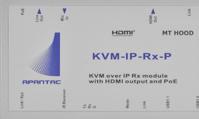






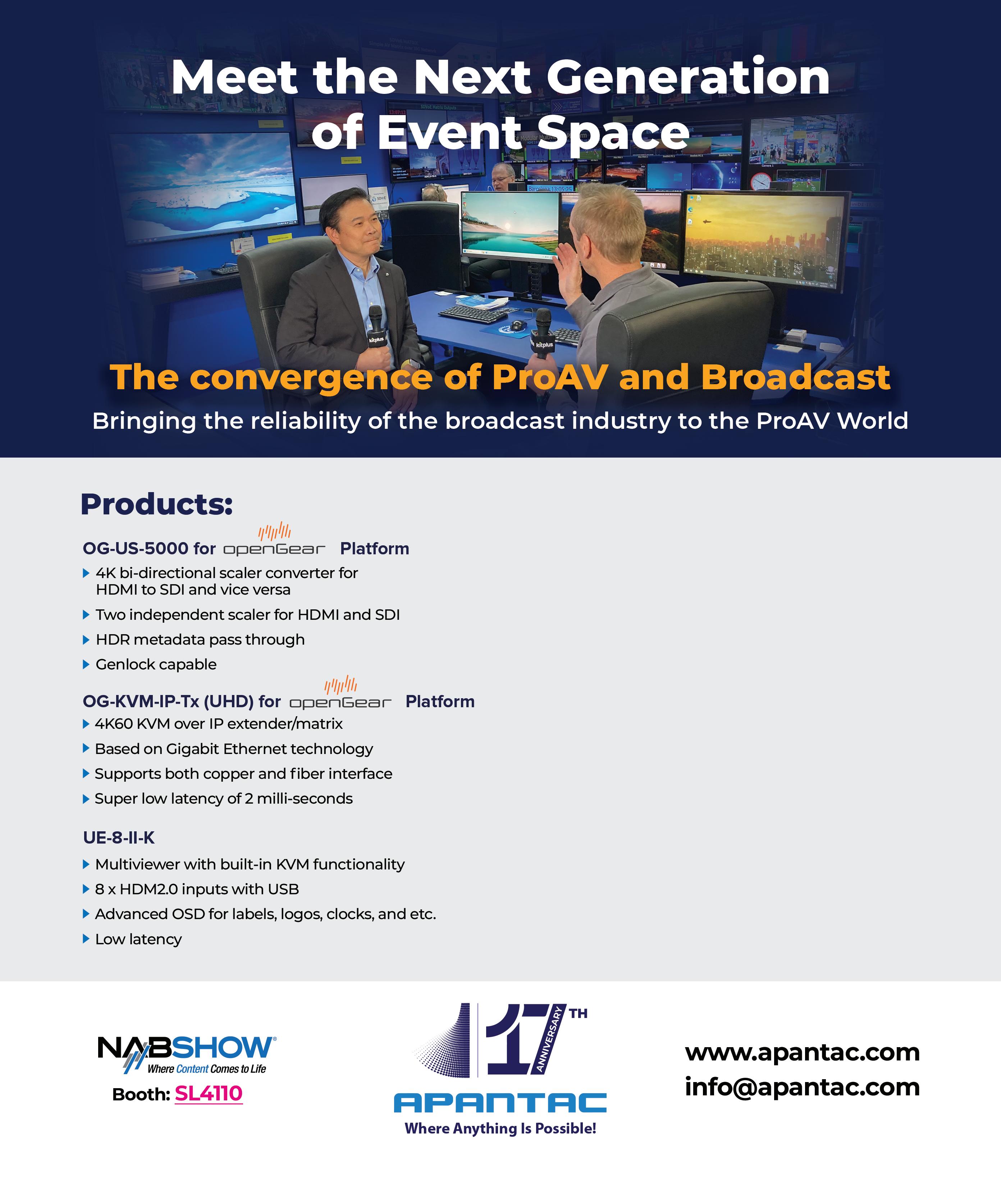



Nancy Diaz Curiel, Regional Sales Director— Corporate EMEA, Ross Video
The demand we see is for solutions that are scalable, flexible, and easier to use while keeping as much control as possible. There are various formats and standards available to help design the best system for a project, including ST 2110, NDI, SRT, and of course more traditional connectivity like SDI and HDMI. We see an increasing desire for customers to engage in detailed design dialogue on how best integrate multiple formats including IP in a single and easy to deploy solution.

Ben Escobedo, Market Development Manager, Shure
IP-based production has proved crucial to both broadcast and Pro AV. The ability to route audio anywhere over a network simplifies production for both camps. In the Pro AV touring sector, running a couple CAT or fiber cables is preferred to having to run a multitude of copper XLR cables. While Dante is arguably the most popular audio-over-IP solution for touring and Pro AV, broadcasters have their own favorites. Regardless of the protocol, the result is more flexibility, higher quality audio, and redundancy in these missioncritical live applications.
How is AI being used to improve production for broadcast or other applications?

Satoshi Kanemura, President, FOR-A America
Artificial intelligence significantly reduces the time and effort required for labor-intensive tasks in video production. It is capable of automating processes such as generating metadata for athletes, which can be
utilized to monitor and analyze their performance across various platforms and events. Additionally, AI can do things like automate the blurring of faces and car license plates to ensure privacy.

Nancy Diaz Curiel, Regional Sales Director— Corporate EMEA, Ross Video
When considering the goal behind AI, it comes down to automation and efficiency. These are demands Ross Video has excelled at enabling. With approximately 20 years of experience in automated production control, we have the largest user base of production automation globally, and have used these insights to develop simplified yet engaging show control platforms and increasingly simplistic corporate event and meeting production solutions that empower a single operator to produce engaging and professional live video events. I see the opportunity for AI to continue to elevate the capabilities in these types of applications as it matures.

Liam Hayter, Product Manager, Vizrt
A key way AI helps any type of production is through the automation of repetitive tasks. This enables production teams to be more efficient with their time, focusing on the creative side of what they want to do, without having to worry about what has been automated. Recently, we’ve seen AI being used in camera tracking in PTZ cameras, which keeps the presenters in shot, as it follows their moves across the space. If implemented correctly, camera tracking is a consistent and reliable tool that enables operators to be secure in the safe movement and focus of the camera, which is essential for the quality of any production.

Heather Sidorowicz, President, Southtown Audio Video
AI is transforming production by automating tasks like camera tracking, audio mixing, and even real-time closed captioning. In broadcast, it could enhance efficiency by adjusting lighting, framing, and transitions without requiring constant manual intervention. AI could also play a huge role in audience engagement using real-time analytics that optimize production decisions on the fly.

Ben Escobedo, Market Development Manager, Shure
AI is certainly a common buzzword; however, AI is proving to be invaluable for audio production professionals with even more advancements on the horizon. Shure’s AI Denoiser in the IntelliMix Room DSP software can detect and eliminate unwanted noises in a typical conference room. It can make sounds like rustling papers, keyboard clicks, and potato chip bags disappear.

Mark Coxon, Director of Strategy and Markets—XTG, AVI-SPL
The promise of AI in broadcast is just starting to be realized. A lot of attention has been given to AI in camera switching and preset selections, although this is much closer to sensor-based automation than true AI. We have seen early promise of AI’s ability to disrupt broadcast workflows in the areas of content creation, editing, and transitions, and generative, royalty-free audio for scoring videos. AI’s impact will only become more pervasive as the technologies mature.
Delivering high-quality live content requires seamless control, flexibility, and real-time access to critical systems. As broadcast workflows become increasingly complex, IP KVM technology is transforming how production teams operate, removing hardware limitations and enhancing efficiency across studios, OB trucks, and remote production environments.
IP KVM enables broadcasters to instantly switch between multiple workstations, ensuring fast, uninterrupted access to editing suites, graphics engines, and playout servers. By centralizing computing power in secure, climate-controlled environments, production teams benefit from quieter, cooler workspaces with fewer physical machines on-site.
From regional TV stations to global multi-feed events, IP KVM solutions scale effortlessly. Whether expanding a point-to-point connection or deploying a full matrix system over IP, production teams can adapt to evolving demands without overhauling infrastructure. The ability to connect operators
across multiple locations ensures real-time collaboration and unified system control.
Live broadcasts increasingly rely on distributed production teams, and IP KVM provides the secure, low latency access they need. Operators can manage and control systems from anywhere, reducing travel costs while maintaining broadcast-grade performance. With high-resolution video, seamless USB integration, and API compatibility, teams can interact with production tools as if they were physically present.
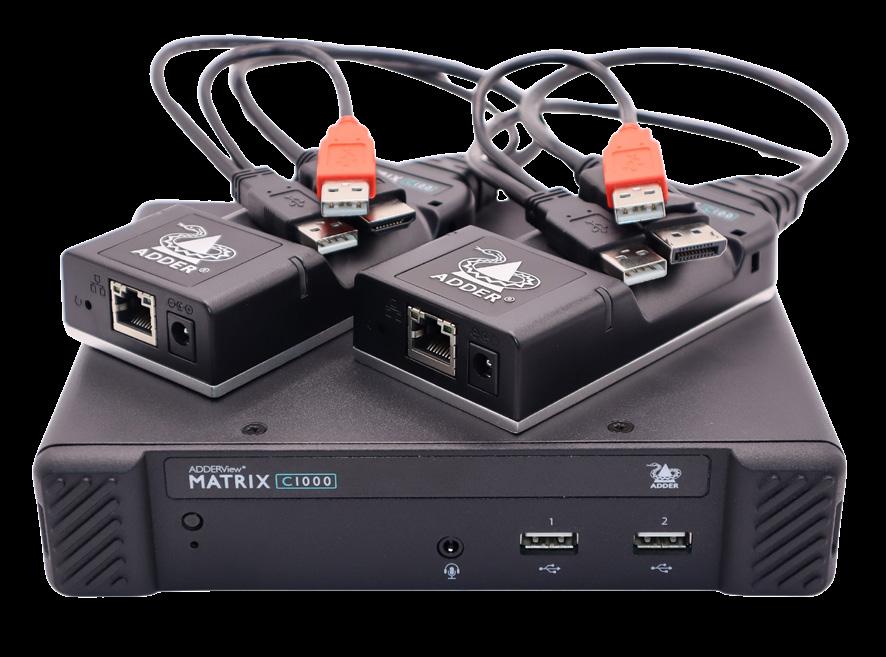
As 4K, HDR, and remote production workflows evolve, IP KVM ensures long-term flexibility. Adopting network-based control solutions eliminates reliance on proprietary hardware, enabling smooth integration with new formats, automation tools, and cloud-based workflows.
For broadcasters looking to enhance agility, security, and efficiency, IP KVM is no longer optional, it’s essential.
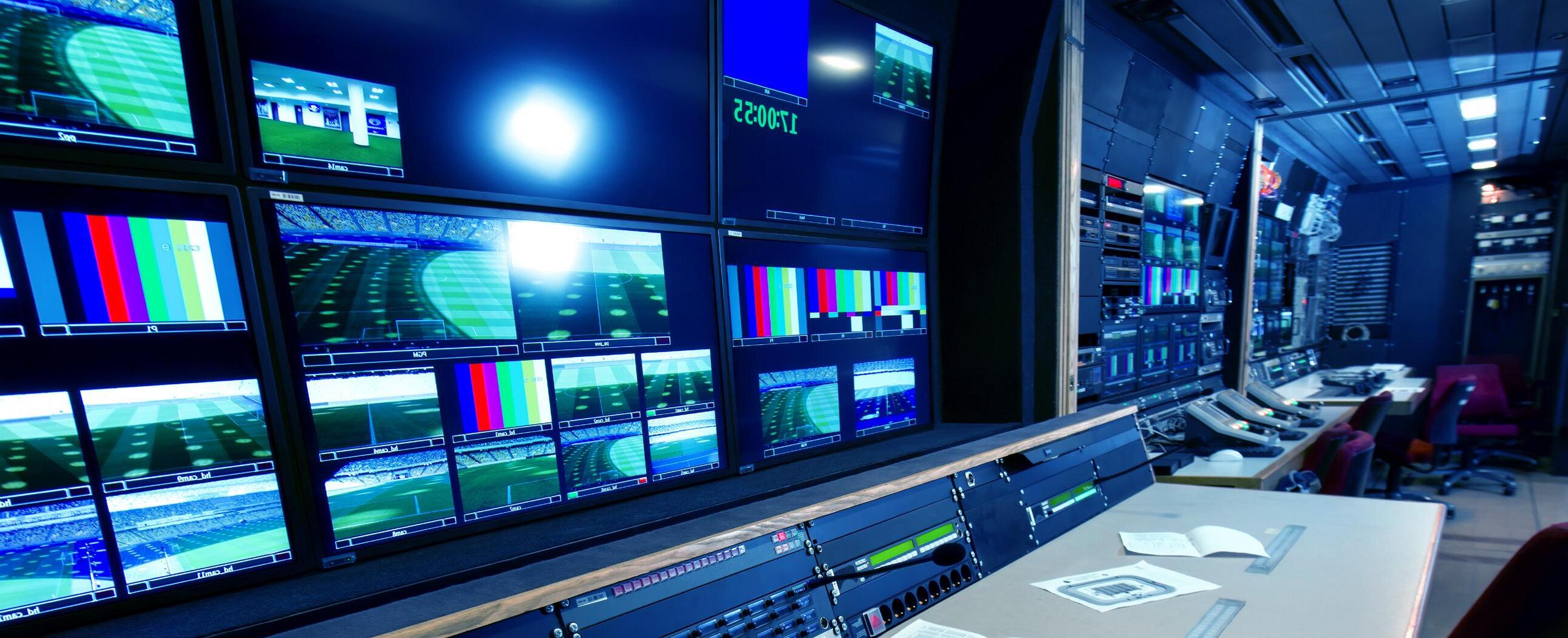


Join the ranks of world-leading media and entertainment professionals who trust Adder’s IP KVM technology for seamless production workflows.
Visit Adder Technology at NAB Show to discover the latest KVM innovation that sets the standard for unmatched reliability and superior quality.
Prestonwood Baptist Church has long been a cornerstone of faith and community for congregants in Dallas, Texas. Yet with two campuses spanning 27 miles and a soaring, metalframed worship center that seats thousands, the church’s media team faced unique technical hurdles in delivering seamless audiovisual experiences. For years, their production crews grappled with wireless signal interference caused by the building’s domed architecture and elevated location — a challenge that conventional systems struggled to overcome.
The turning point came when Prestonwood discovered Riedel’s Bolero wireless intercom system. Initially adopted to solve communication issues in their acoustically complex building, Bolero’s reliability and innovation quickly won over the team, becoming the backbone of Prestonwood’s operations. The wireless system’s flexibility allowed staff to move freely across the campus while maintaining crystalclear communication, whether coordinating camera operators or managing stage cues.
Bolero’s success paved the way for a broader Riedel overhaul. The church upgraded to a full Artist intercom ecosystem, anchored by a robust Artist-1024 matrix and intuitive SmartPanels. These tools unified communications across audio, video, lighting, and stage teams, enabling customizable workflows through features like remote keys and Bluetooth integration. Moreover, the system’s adaptability allows for instant reconfiguration during different types of
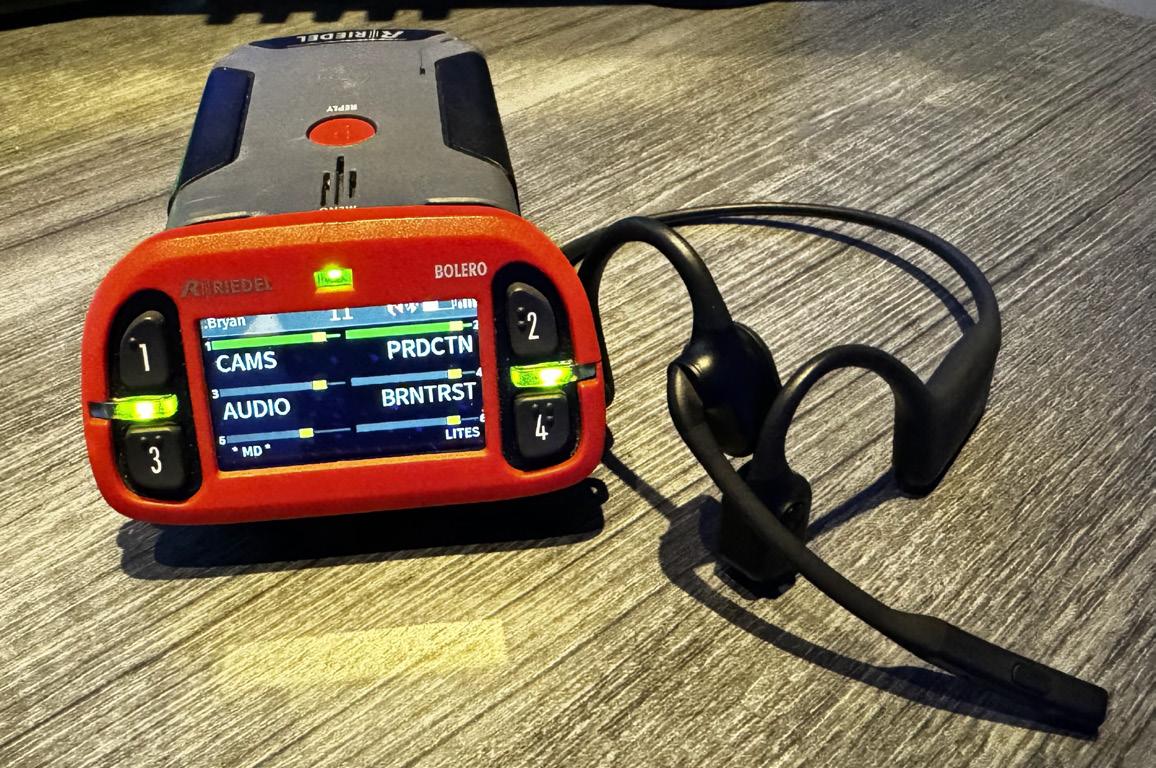
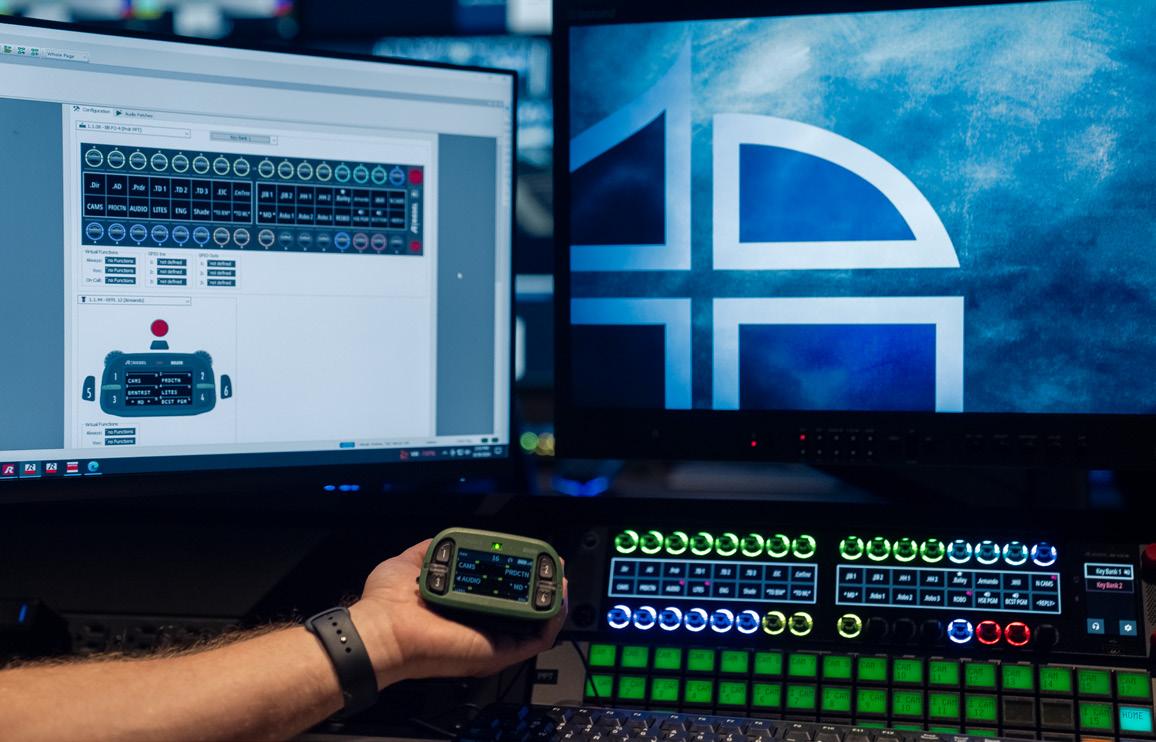
events, ensuring every team remains perfectly synchronized. But Prestonwood’s ambitions didn’t stop at intercoms. To bridge their two campuses, the church deployed Riedel’s MediorNet — a real-time media network that routes video, audio, and data over dark fiber. What began as a video distribution solution soon expanded into a multipurpose infrastructure, linking student ministry buildings and enabling creative production approaches. Thanks to its versatility, MediorNet’s became more than just a signal transportation system; it’s a tool that allows Prestonwood to explore unprecedented production possibilities with remarkable reliability.
The integration, designed in collaboration with Broadcast Technical Services and Riedel consultants, reflects the church’s commitment to technological excellence. Today, Prestonwood’s services blend tradition with cutting-edge innovation, all powered by systems that work as harmoniously as the community they serve. From the sanctuary’s vaulted ceilings to the farthest reaches of its campuses, Riedel’s solutions ensure that every word, note, and moment of connection reaches its audience — without missing a beat.
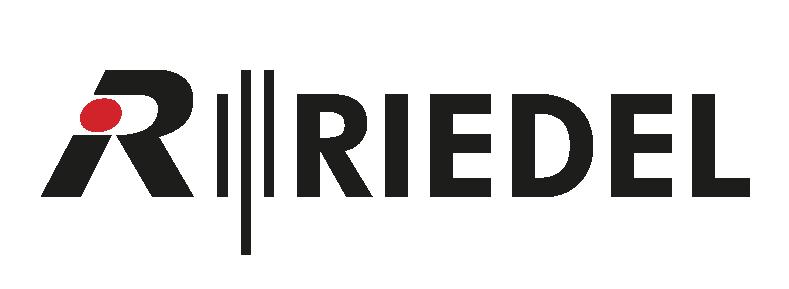
https://www.riedel.net/en/


OLA MELZIG PRODUCTION MANAGER
M&M PRODUCTION MANAGEMENT
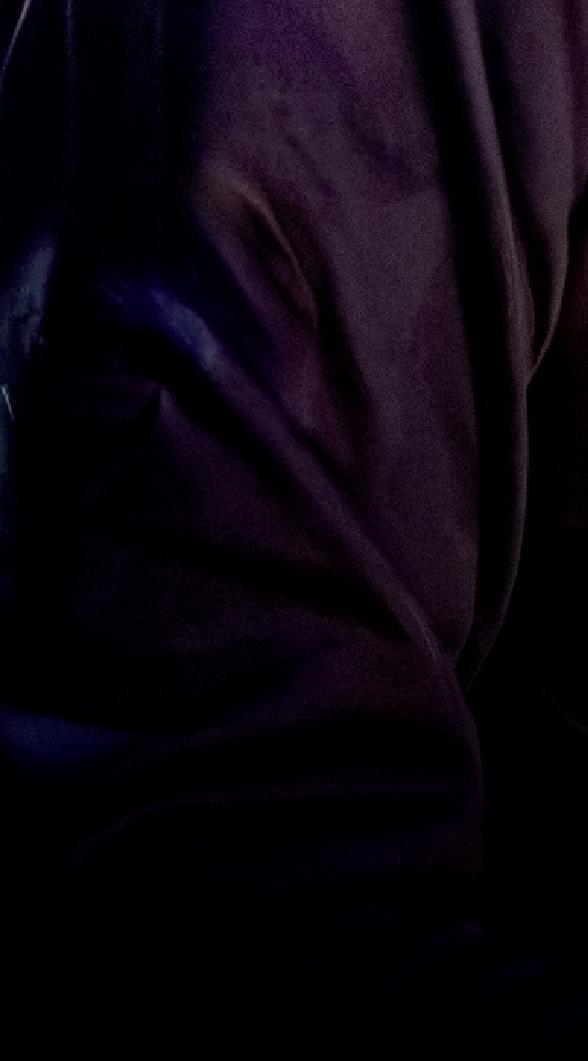

I just love the new generation of the Artist user interfaces. The SmartPanel‘s intuitive workflow and its very visual layout are simply fantastic.
I can customize it in any way I need, which is absolutely crucial for the big live events I typically work on.“

ARTIST INTERCOM Professional and reliable live communications. Seamless integration of Riedel‘s SmartPanel and Bolero wireless intercom. Easily scaling from 16 to 1024 ports with flexible licensing.

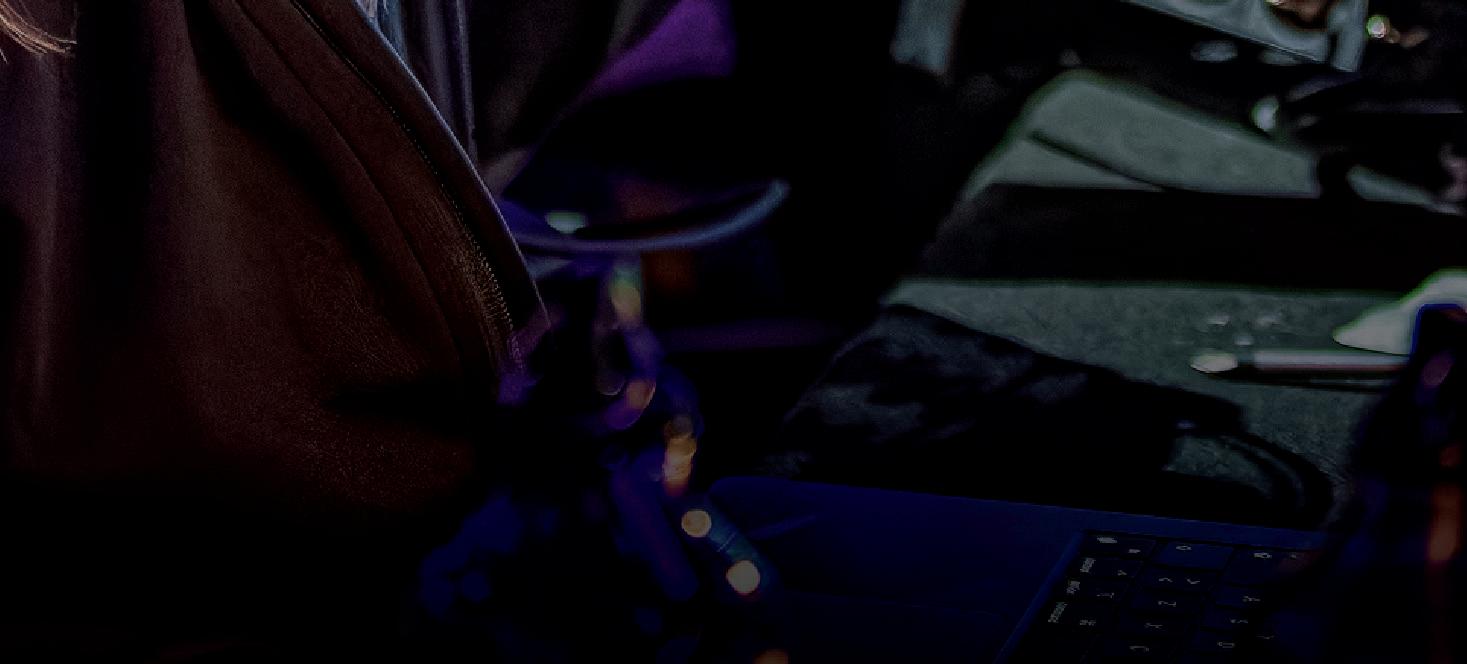

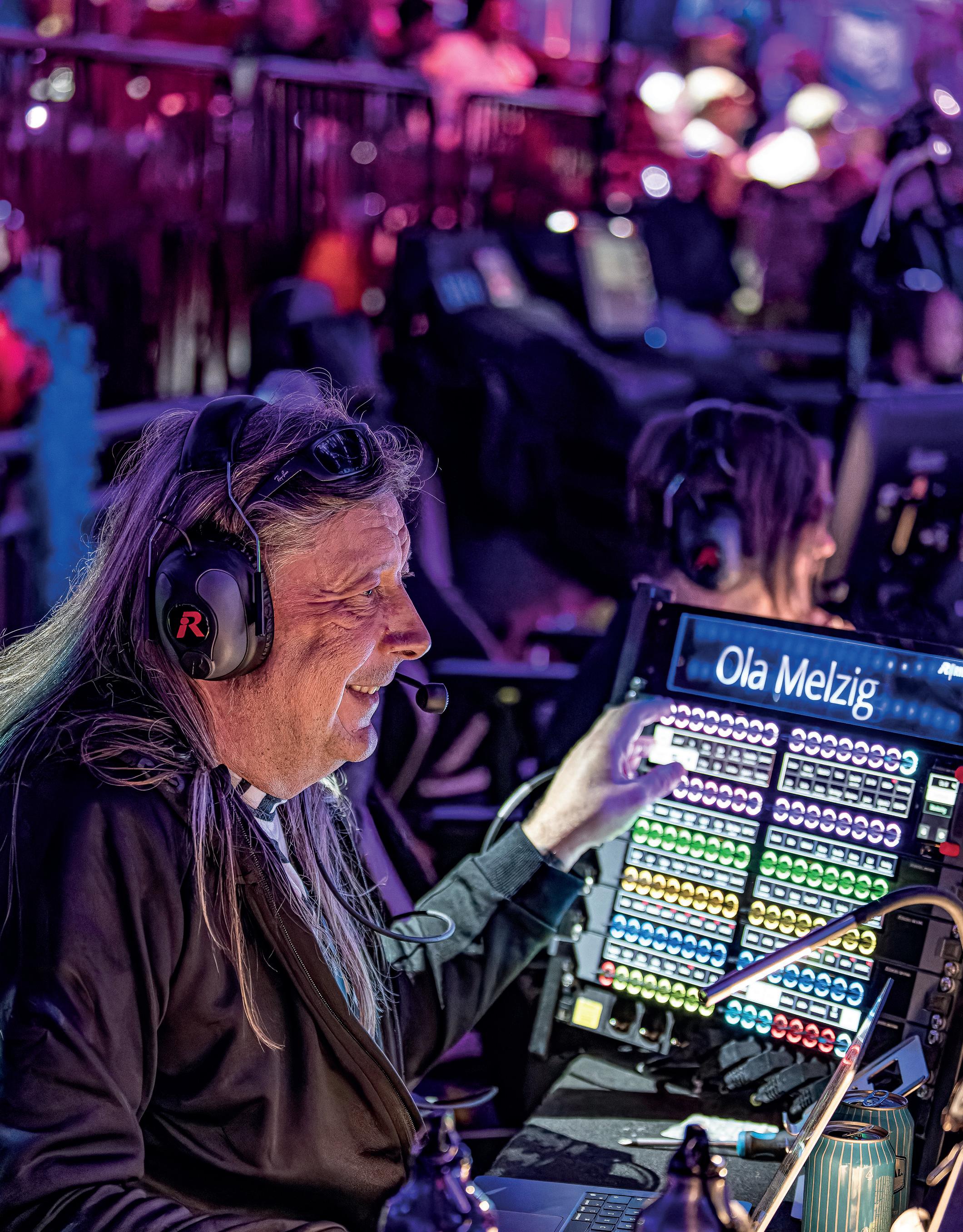
As NAB Show 2025 approaches, OBSBOT is set to revolutionize live production with an AI-powered product ecosystem designed for broadcasters, AV professionals, and content creators. Headlining the showcase is the newly launched Tail 2, a groundbreaking AI-Powered PTZR 4K Live Production Camera, alongside OBSBOT’s comprehensive product lineup.
stabilization and an auto-leveling system that keeps the lens perfectly horizontal, ideal for multi-platform broadcasting and social media content.
■ Broadcast-Ready Connectivity Options: Full-size HDMI 2.0 Port (4K), Ethernet, RS-232 (Pelco-D/P), USB 3.0, and 3G-SDI ensure seamless live streaming and remote production integration.
The OBSBOT Tiny and Meet Series deliver advanced AI-powered webcams, while versatile accessories like tripods, adapters, remotes, ND filters ensure flexibility and seamless Pro AV integration.
Introducing Tail 2: The World’s First Three-Axis PTZR 4K Camera Launched on March 20, 2025, OBSBOT Tail 2, a revolutionary AI-powered PTZR (Pan-TiltZoom-Rotate) camera, redefines smart videography. Designed for broadcast studios, live events, worship services, and creators, it delivers precision, flexibility, and cinematic quality across diverse creative applications.
■ Expanded Protocol Support: The device supports NDI, FreeD (AR/VR), RTMP, RTSP, VISCA, Pelco-P/D, and SRT, ensuring versatility and broad compatibility.
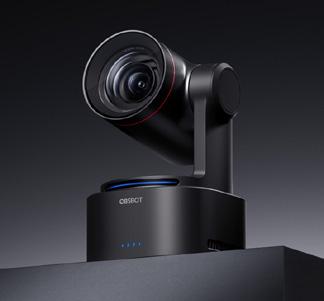
Key Features:
■ Next-Generation AI tracking: AI Tracking 2.0 introduces ‘Only Me’ mode for focused tracking, Group Tracking for multiple subjects, and identification of 30+ animal species & 200+ objects. Customizable tracking speed and axis tracking offer unmatched control, while Auto Zoom (3-24x) ensures professional framing.
■ Unparalleled 4K Image Quality: The OBSBOT Tail 2 captures 4K@60fps and 1080P@120fps with a 1/1.5” CMOS sensor, 12-element optical lens, 12x hybrid zoom, and 5x optical zoom. Features All-pixel PDAF, Dual Native ISO, and AI-powered noise reduction for stunning clarity in all lighting conditions.
■ Revolutionary Three-Axis PTZR: The world’s first PTZR design 4K camera enables 90° lens rotation for seamless vertical 4K capture, with outstanding
■ User-oriented Hardware and Software: Tail 2 offers a clear Tally Light, 5-hour battery life, fast Wi-Fi 6, versatile software options, and seamless integration with OBSBOT’s ecosystem for efficient streaming. Beyond Tail 2, OBSBOT is showcasing a full suite of AI-driven products and useful accessories tailored for live production and Pro AV applications.
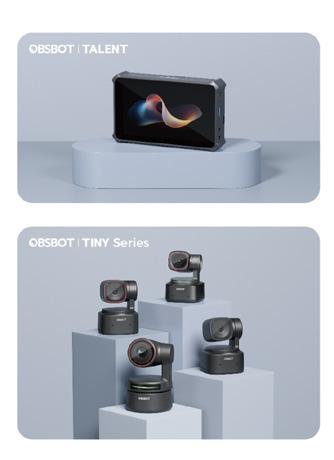
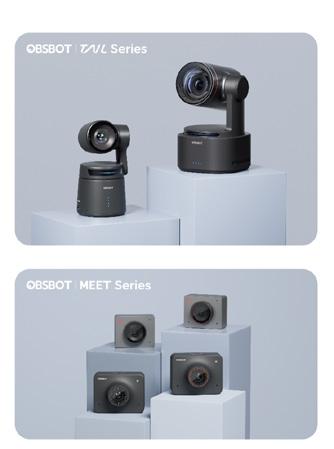
OBSBOT Tail Air redefines 4K streaming with NDI connectivity, multi-port integration, AI-powered director grids, and exclusive app support, streamlining multi-camera live streaming workflows with effortless control and professional-grade results.
OBSBOT Talent is an all-in-one multicamera live streaming and production studio, combining an encoder, switcher, recorder, monitor, and controller into one compact device. It simplifies workflows while enabling real-time video management and seamless multi-platform streaming.
At Booth SL11911 (South Hall Lower, Las Vegas Convention Center), OBSBOT’s interactive booth will showcase AI-driven production workflows for AV professionals.
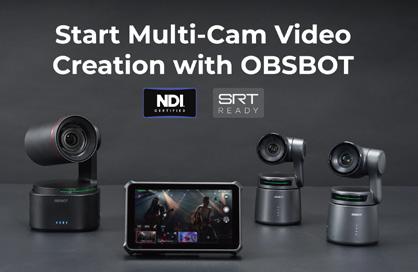
In the NDI-Driven Studio setup, a Tail 2 camera connects to a network switch via Ethernet, enabling ultra-fast data transfer and real-time multiple-display output. This demonstrates how OBSBOT’s NDI-powered video solutions simplify virtual productions, making high-quality content creation more accessible.
The Multi-Device Live Streaming demo, powered by OBSBOT Talent, features OBSBOT Talent as the core hub, managing a network of OBSBOT cameras—including Tail 2, Tail Air, and Tiny 2—via Ethernet, USB-C, and HDMI. With real-time angle switching, AI-powered tracking, and low-latency communication, this setup highlights multi-camera workflows and showcases how OBSBOT simplifies professional live production.
Following its successful NAB Show 2024 showcase, OBSBOT continues to democratize professional videography with intelligent AI tools and multi-device workflows. Whether you’re a AV professional, streamer, educator, or event producer, OBSBOT’s cutting-edge technology delivers the precision, efficiency, and quality you need.
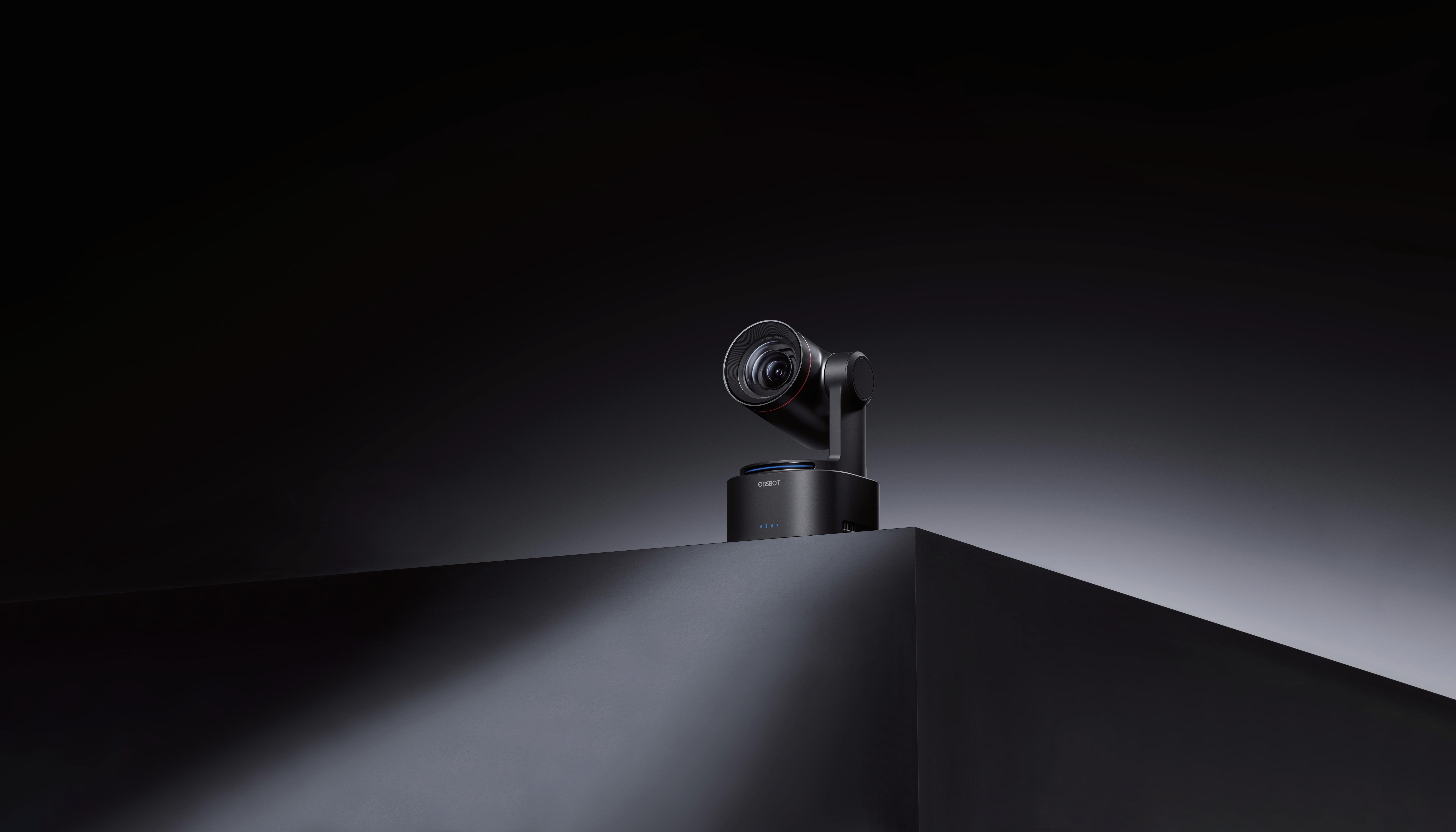
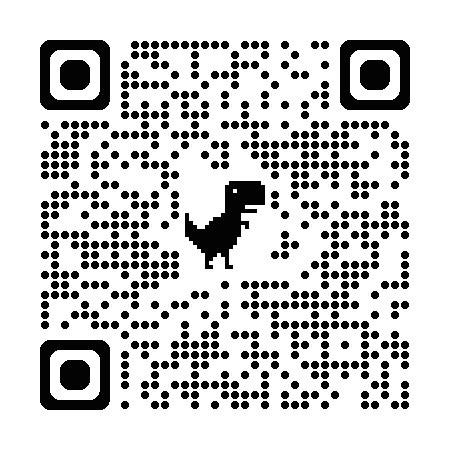
The Liberty X live production workstation is an ideal solution for live streaming and multicamera production. Designed by Broadfield and built by StreamDudes, the system has been tested and certified by Vizrt for TriCaster Mini S, Telestream for Wirecast Pro, and exceeds vMix Ruby specifications. Liberty X delivers seamless performance for all live production professionals, is backed by a three-year hardware warranty, and is supported by system integrators and VARs throughout the United States.
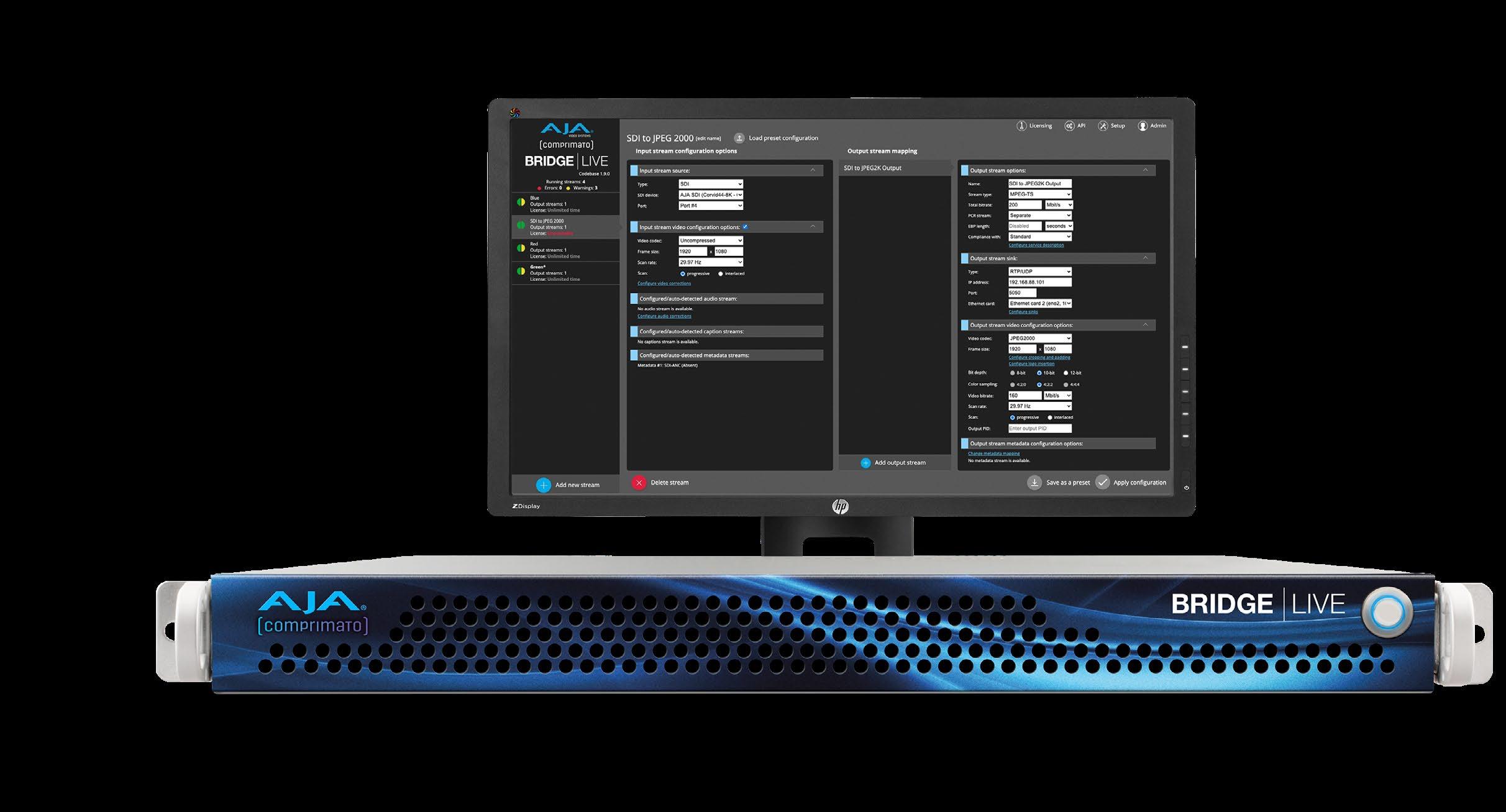

Ideal for all types of AV for broadcast installations, the Telemetrics RoboEye2 (PT-RE-2) is a fully integrated, aesthetically pleasing robotic camera system that includes a 4K digital camera with zoom lens and a compact pan/tilt head. The system’s robotic servo controls use motors of ultra-high position and velocity accuracy, which makes RoboEye2 a great choice for on-air use, without any additional required peripherals. A network interface supports Ethernet, USB, and serial digital.
BRIDGE LIVE is a broadcast-quality, lowlatency turnkey system for remote production, two-way interviews, live event streaming, synchronous multi-camera backhaul, and more. The IP video bridge offers 12G-SDI I/O and high-performance, bi-directional video encoding, decoding, and transcoding that professionals can depend on. It features support for an extensive array of standards, codecs, protocols, and transport mechanisms, from NDI to H.265 and H.264, NDI, JPEG 2000 and JPEG XS,
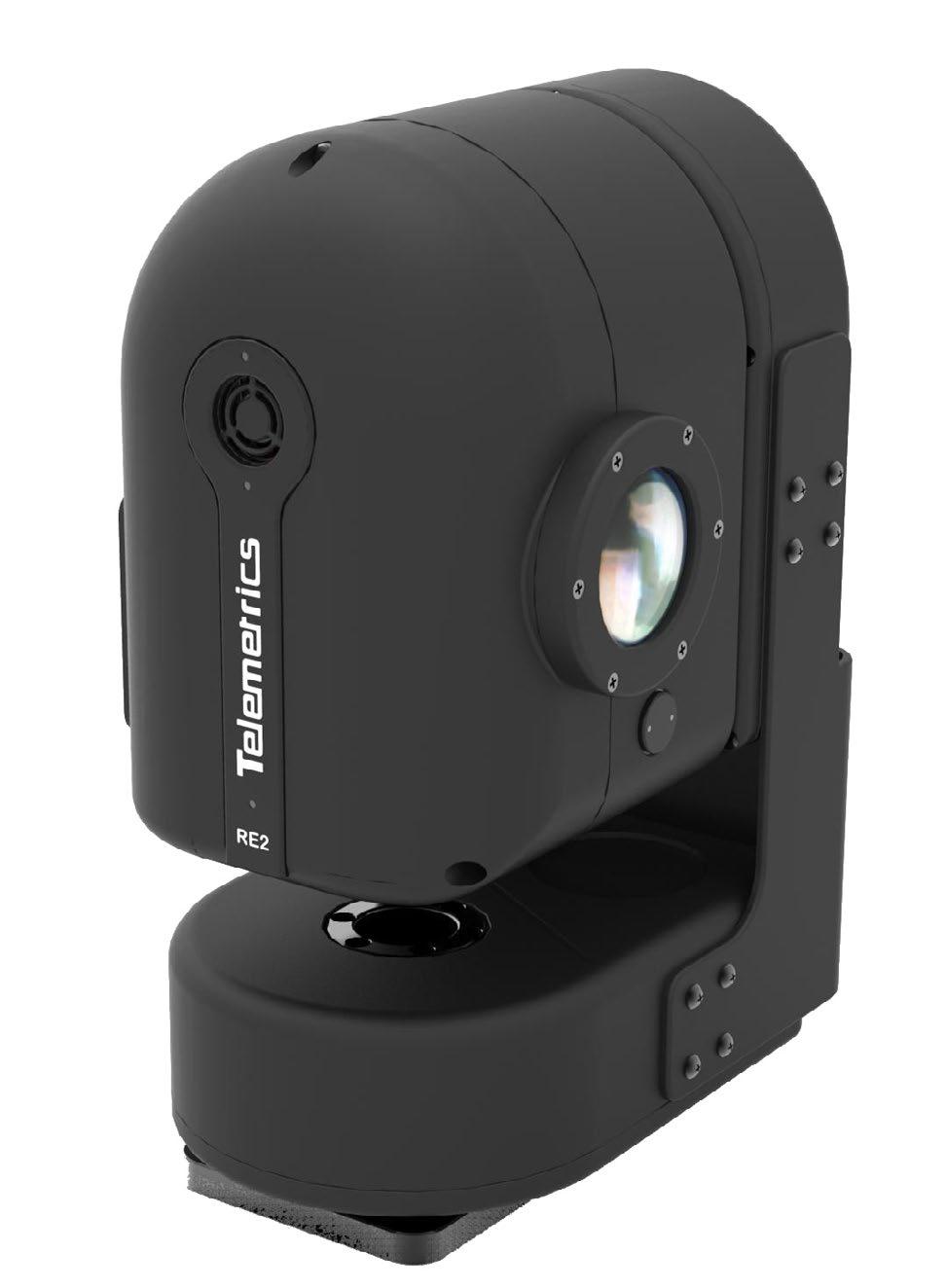

The Apantac DA-HDTV-Dante-Tx-UHD is a highperformance HDMI to Dante AV converter, designed to decode HDMI 2.0 signals that contain Dolby and DTS formats such as Dolby Atmos and DTS:X into Dante audio. It supports up to 16 channels of audio with ultra-low latency and resolutions up to 4K60 4:4:4. Ideal for broadcast, Pro AV, and live event environments, it simplifies the distribution of premium-quality Dante audio over standard IP networks.
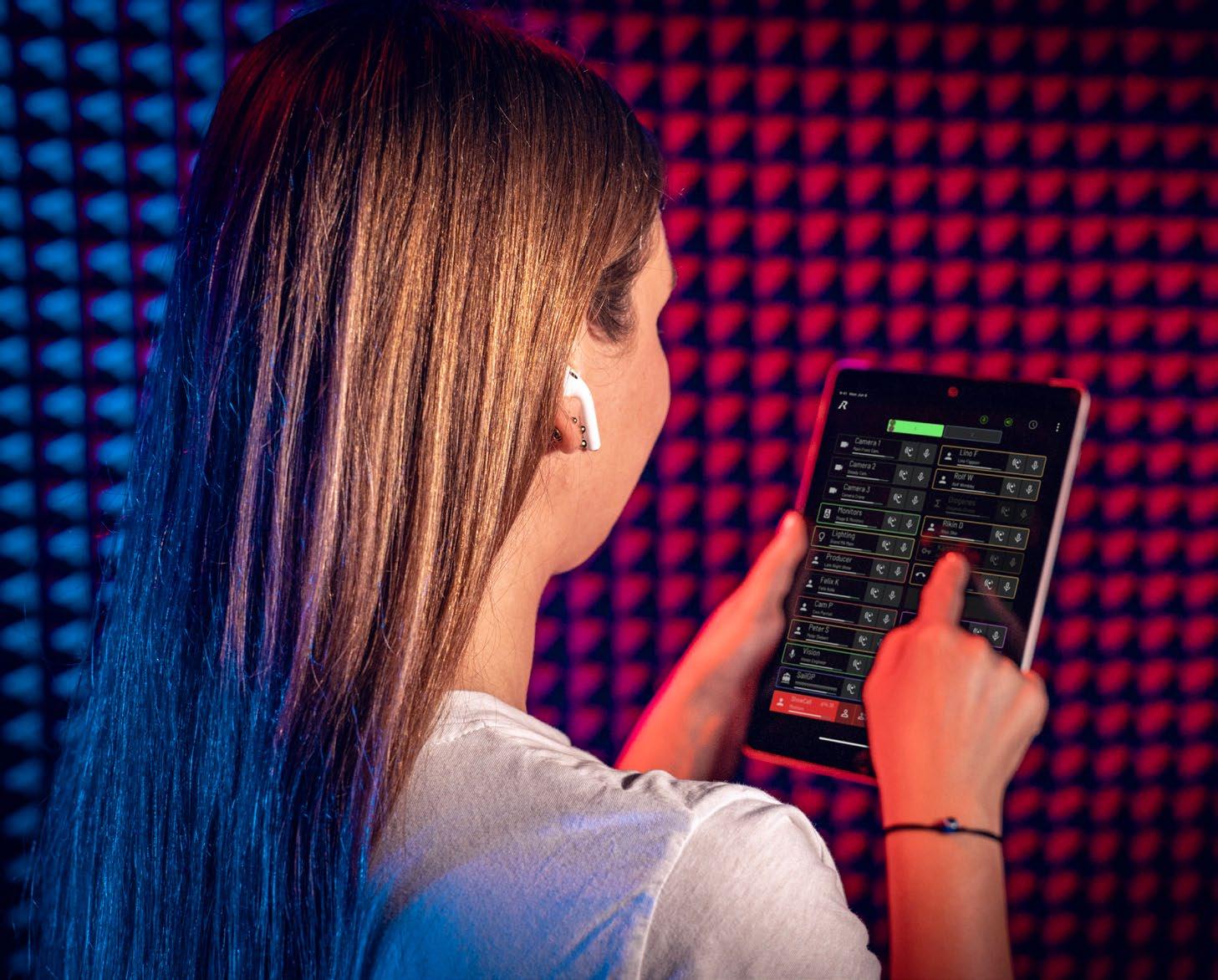
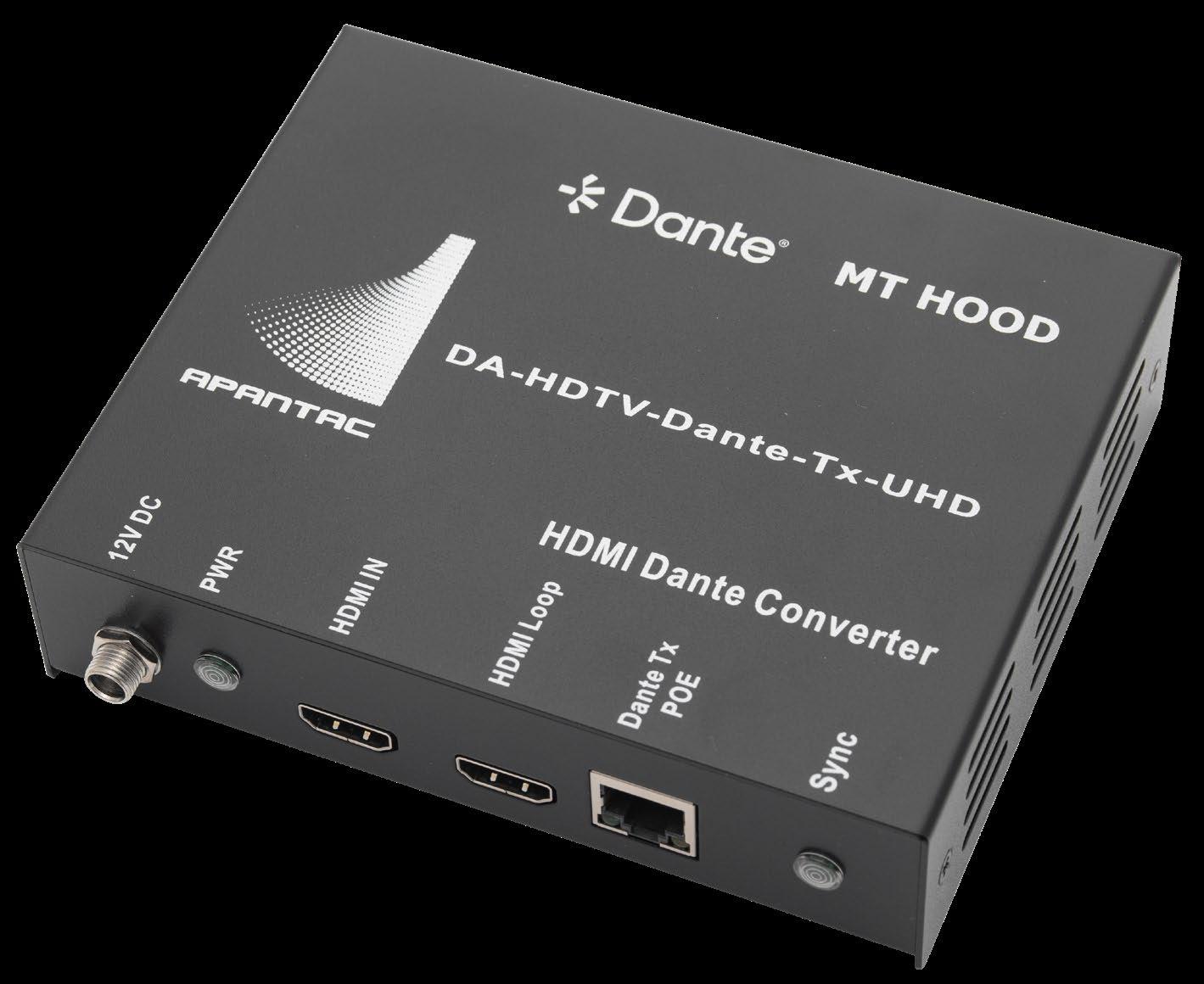
Riedel’s Virtual SmartPanel (VSP) revolutionizes remote collaboration and communication in global production, offering seamless interconnectivity for teams using Riedel’s Artist intercom systems. Accessible on iOS, Android, and web browsers, the VSP blends virtual capabilities with COTS equipment, adapting to different screen sizes with up to 64 keys. Its flexible licensing allows users to switch devices and roles effortlessly, enhancing efficiency and reducing costs. With a focus on security and redundancy, the VSP ensures encrypted communications and reliable data transmission. Integrated with Riedel’s STAGE software, it offers real-time management, monitoring, and secure access, making it ideal for remote and freelance production environments.
Matrox ConvertIP is a series of ST 2110/IPMX baseband converters and encoders/decoders. Convert ST 2110 signals between HDMI or SDI using multiple input/output options. ConvertIP is compatible with various network capacities, including 1G, 2.5G, 10G, or 25G. Applications include encoding, displaying, monitoring, and transmitting compressed and uncompressed 4K, zero-latency video. ConvertIP SDM is an Intel Smart Display Module that supports ST 2110 and IPMX inputs, offering a universal interface to receive and display signals on any SDM-enabled display or projector.
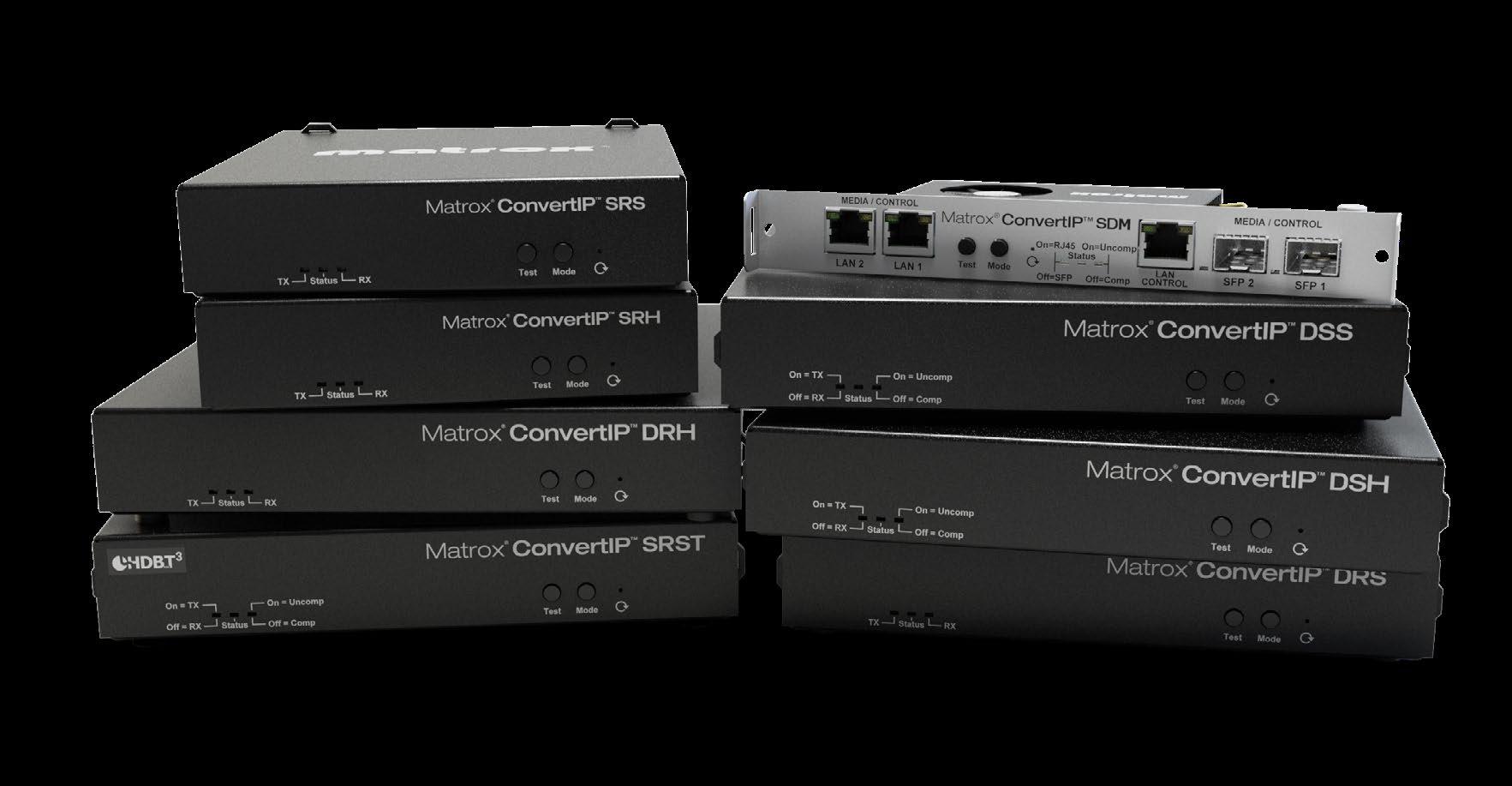
Featuring an ultra-thin, narrow width form factor, the Planar DirectLight Slim Series accommodates curved and space-constrained applications. Models feature MicroLED technology and are available in 0.9, 1.2, 1.5, and 1.8 mm pixel pitches with a maximum brightness of 1,600 nits and a unique 4:9 aspect ratio to support deployment versatility and vibrant viewing experiences. Customers also benefit from an installation depth of less than 2 inches and detailed insight into display health and performance with pixellevel monitoring.
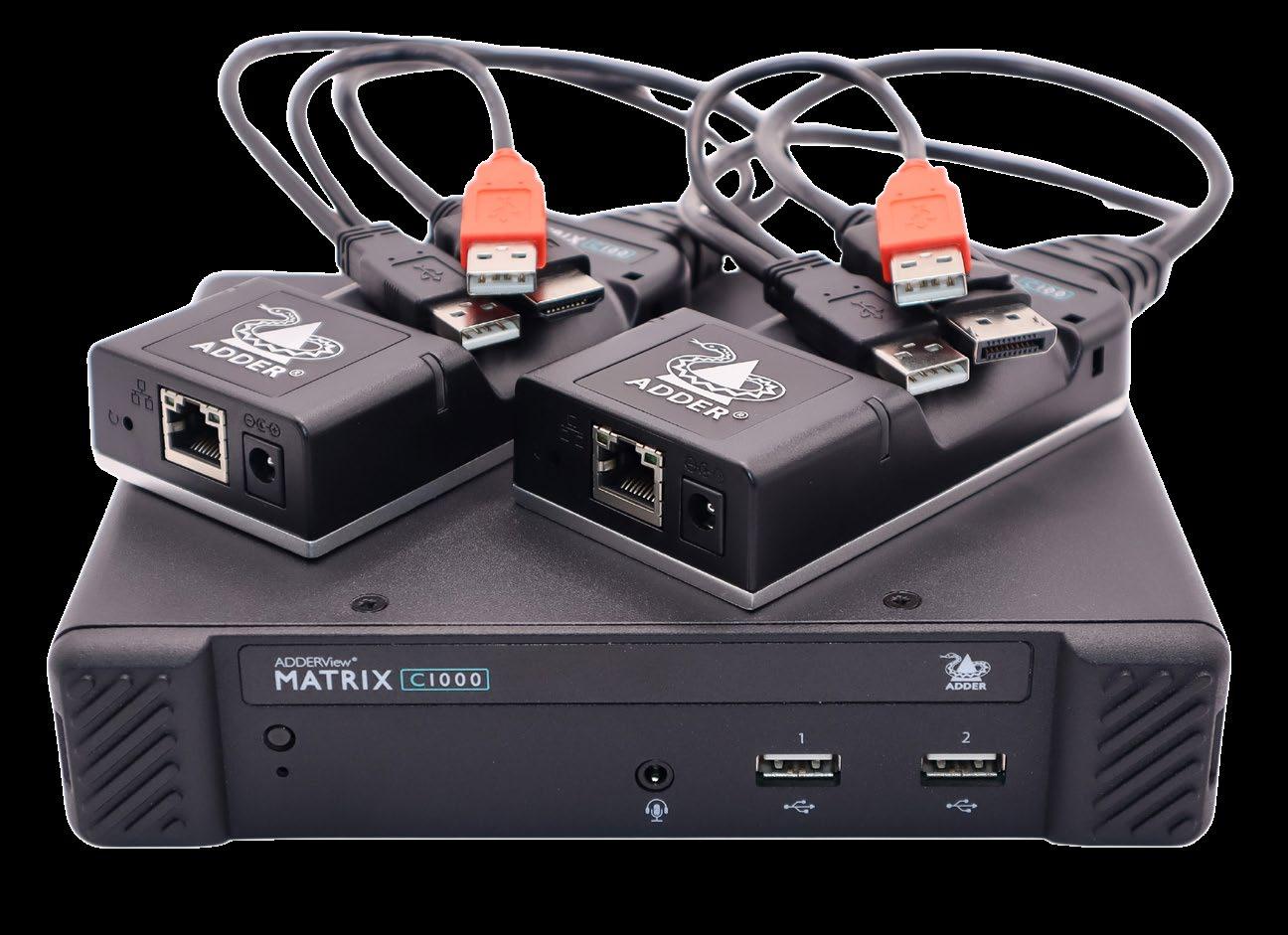

OBSBOT Tail 2 is a three-axis PTZR 4K camera, engineered to redefine smart videography with next-gen AI Tracking 2.0, 4K60 imaging, an advanced PTZR design, and seamless adaptability. Designed for precision, flexibility, and cinematic quality, it empowers creators across live events, worship services, studio production, and more. With effortless control and professional-grade results, Tail 2 pushes the boundaries of intelligent, highperformance video creation.
Streamlined IP KVM matrix solutions are perfect for organizations where ease of use and low maintenance are paramount. Typically used in an unmanaged configuration without a KVM management switch, these systems are designed for quick installation and reliable operation, and are managed with minimal technical knowledge required. ADDERView Matrix is an ideal solution for any organization looking for a simple and powerful IP KVM matrix.
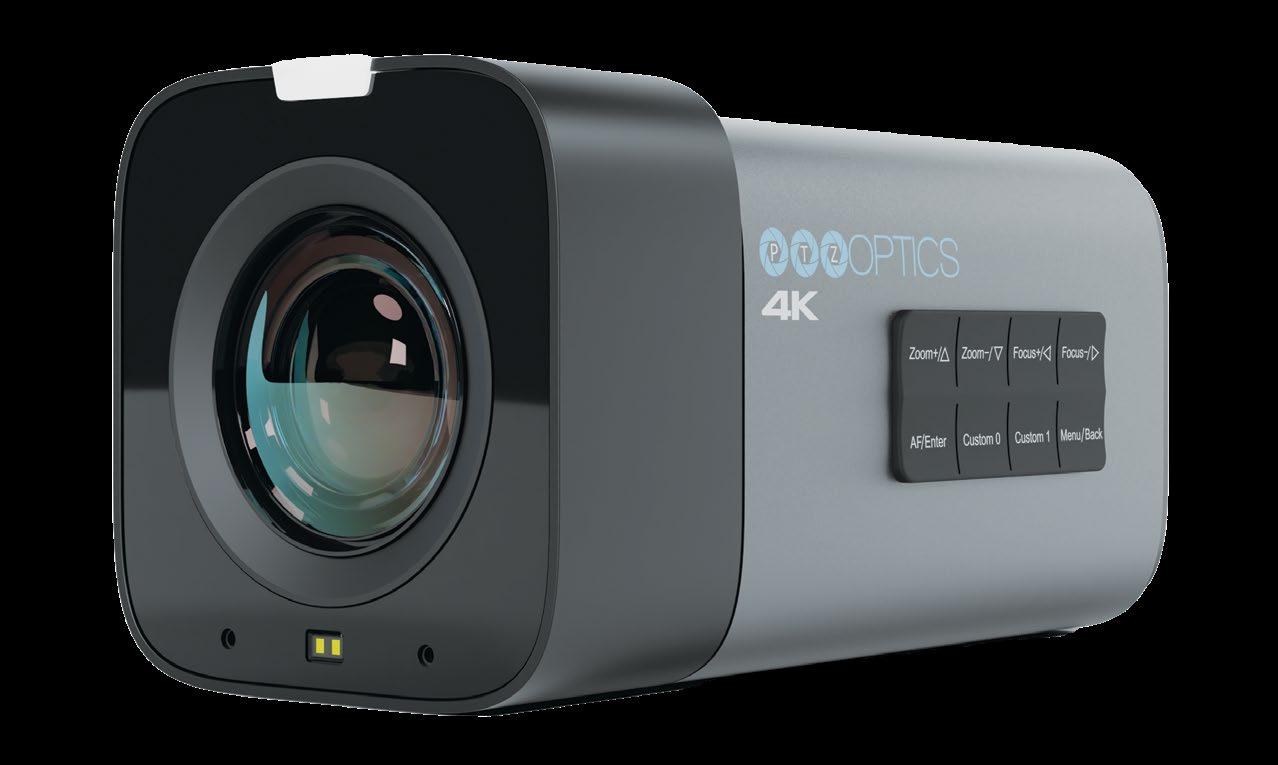
The PTZOptics Studio 4K fixed camera delivers 4K resolution with 12x or 20x zoom, making it ideal for standalone use or integration into studio setups. With SDI, HDMI, USB, and IP outputs— including native NDI HX2—it offers seamless connectivity for streaming, recording, or live production. Hive-Linked to Hive Studio, it enables effortless remote control. Ideal for broadcasting, worship, sports, and security, its durable, unobtrusive design ensures reliability for any production environment.
